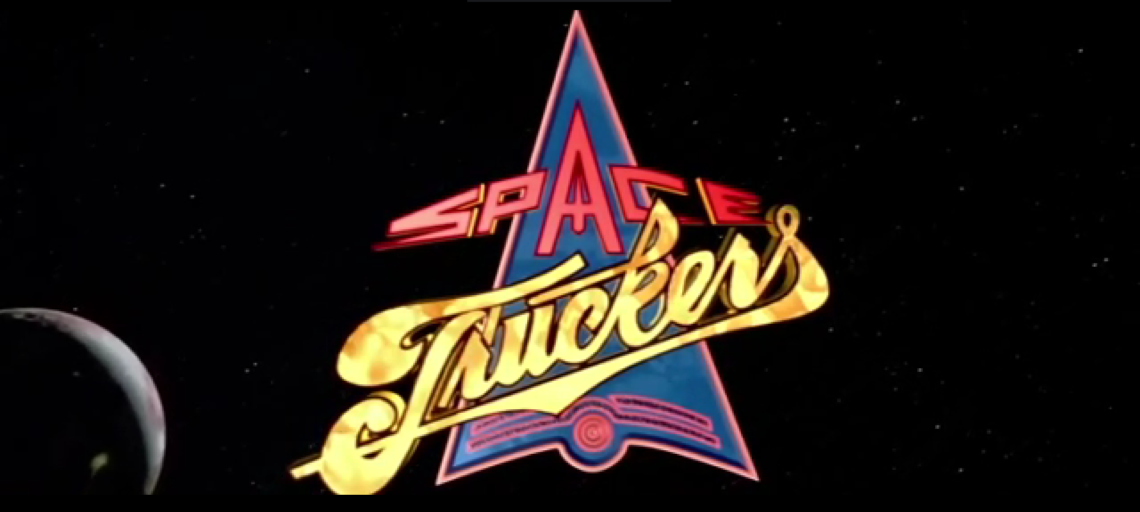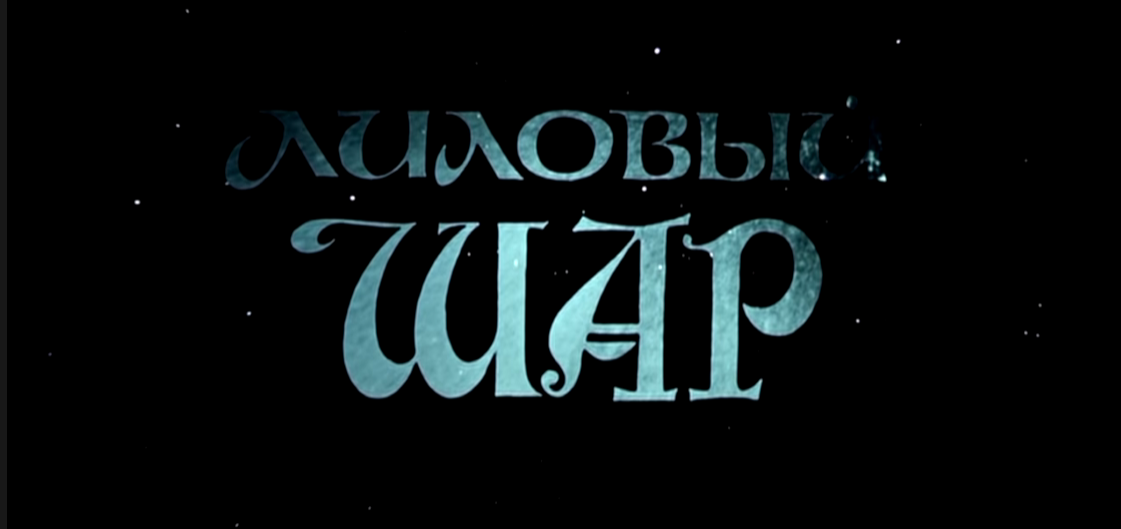-
#510 – Trancers 6 (2002)


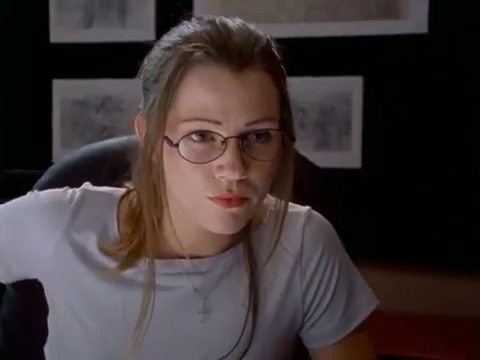
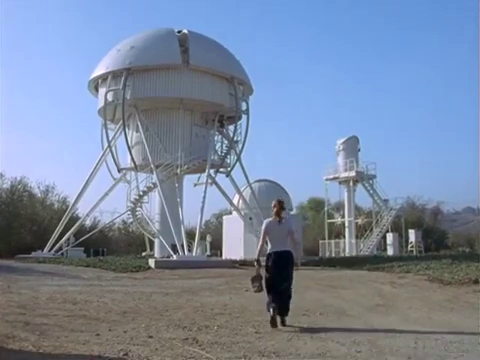
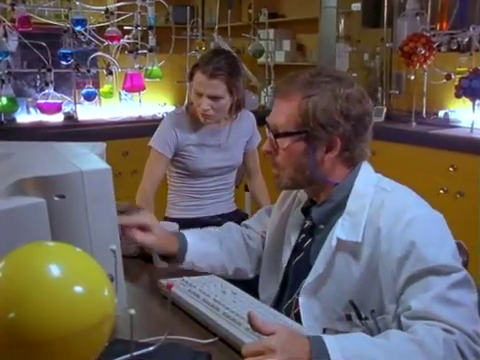

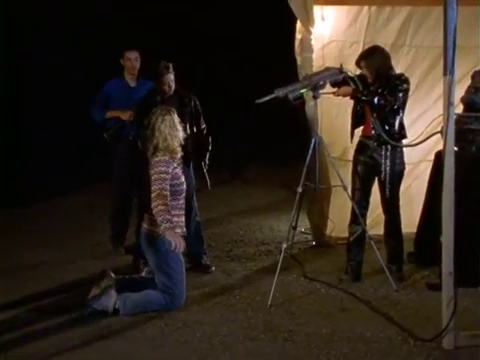
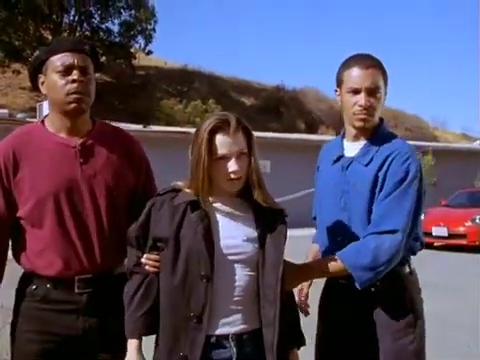
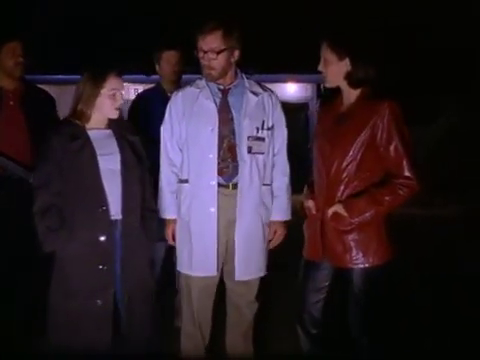

Trancers 6 (2002)
Film review #509
Director: Jay Woefel
SYNOPSIS: Trancer hunter Jack Deth is once again sent “down the line” back in time to hunt down a new Trancer threat. He ends up in the body of his daughter, whose lifestyle certainly doesn’t fit with his own. In this new body and life, Deth must hunt down the Trancer threat and put a stop to it before his daughter is killed and he is wiped from existence.
THOUGHTS/ANALYSIS: Trancers 6 is a 2002 sci-fi film and the sixth film in the Trancers film series. In a return to the original premise of the films, Trancer hunter Jack Deth is sent back in time to inhabit the body of his daughter in the 21st century, to find and counter a new Trancer threat before they can kill his daughter and erase his existence. After the weird fantasy adventure of Trancers 4 and 5, this one returns to a more simple sci-fi action film. The absence of Tim Thomerson as Jack Deth in this film removes the only redeeming aspect of this film franchise: his caricature of cheesy action heroes was so ridiculous that it would be entertaining. His appearances in this film are limited to archive footage from previous films, and a stunt double playing his barely visible body strapped to a table in the future. Instead, we get Jack inhabiting his daughter Joanne…who is also his great-great grandmother, managing to create some sort of paradox or another, but this is glossed over, as the film doesn’t really focus on details in general: it’s straightforward, to the point, but that lack of detail really slows the film down after the first act, where it becomes apparent the film has very little substance. The film manages to feel both like a low-budget film from both the 80′s and the early 2000′s at the same time, which I suppose makes sense, but being released eighteen years after the first film, there’s very little progress to show in terms of story, production, lore, or design.
Joanne (Jo) is basically everything Jack Deth isn’t: a tee-total, vegan, meek nerd with a dull career. The majority of the humour in this film basically derives from Jack Deth being his foul-mouthed, smoking, misogynistic self, retorting everything that is said to him with a cheesy or inappropriate one-liner. The film is very much a one-trick pony in this regard, but honestly, it retains it’s entertainment value throughout the film, and it is genuinely funny in parts by virtue of how purely cheesy it is. This has always been the Trancers films best aspect, and it is good to see that even without Thomserson, they are still able to pull it off. Zette Sullivan as Jo Deth manages to pull off Jack’s style of speech and deliveries pretty well, and you can really believe that Jack is inhabiting her body. The line delivery is a bit flat sometimes, but there’s definitely worse things about the film. The rest of the cast; from the supporting characters to the villains, really do not leave an impression. The new Trancer threat isn’t really explained after Jack supposedly wiped them all out in the previous films: apparently it has something to do with meteors and radiation or something, but as mentioned, the intricacies of the plot aren’t really the focus of the film.
Being a production by Full Moon Entertainment, you should expect a low-budget production, but this is bad even by their standards. The sets are limited to empty building, corridors, and some rural outdoors scene in the middle of nowhere. The special effects are really bad, but thankfully only used once when a guy is thrown out of a high-rise building, resulting in a hilariously bad effect. The gore and other effects are pretty standard, and are nothing too noteworthy; a lot of the production is very much what you would expect from these films, but there’s also a distinct lack of trying to do anything unique, and an added amateur-ness in the camera work, acting and locations. Trancers 6 is a bad film, there’s no escaping it: it is dull, poorly produced, and very threadbare on plot that it feels somewhat pointless. Despite all of that though, it still manages to recapture the absurd, over-the-top character of Jack Deth even without Thomserson’s portrayal, and the twist of putting him into a young woman’s body is just different enough to provide new entertainment value in the whole set-up. The film definitely relies on this sole gag to carry the whole film, but if you’ve made it through the previous Trancers films and got some laughs and entertainment from them, you can probably get a little more out of this last one.
-
#509 – Godmonster of Indian Flats
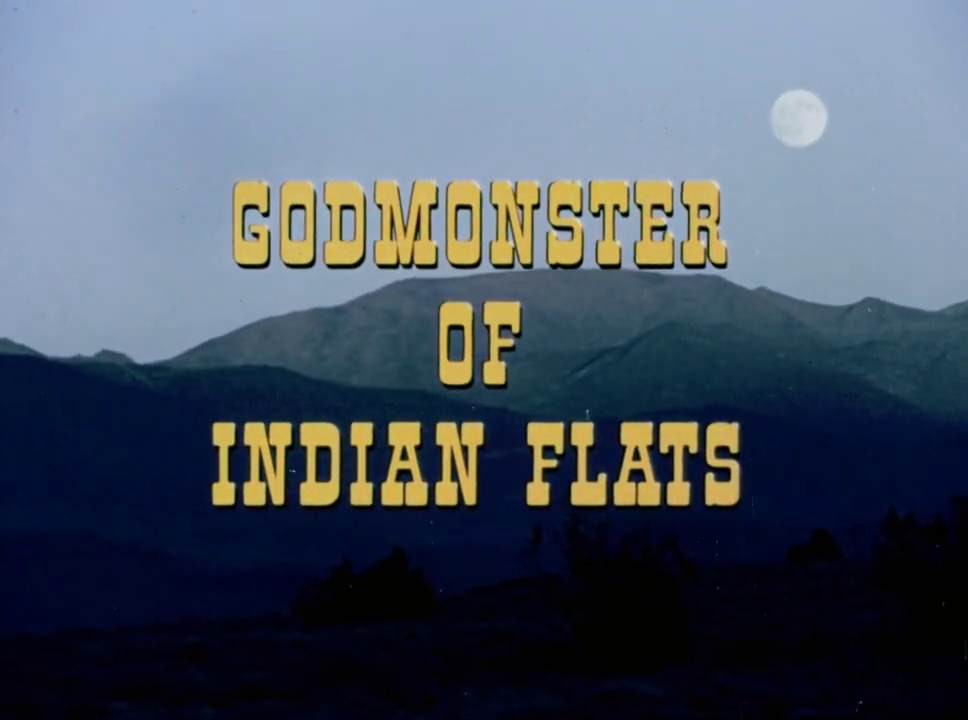
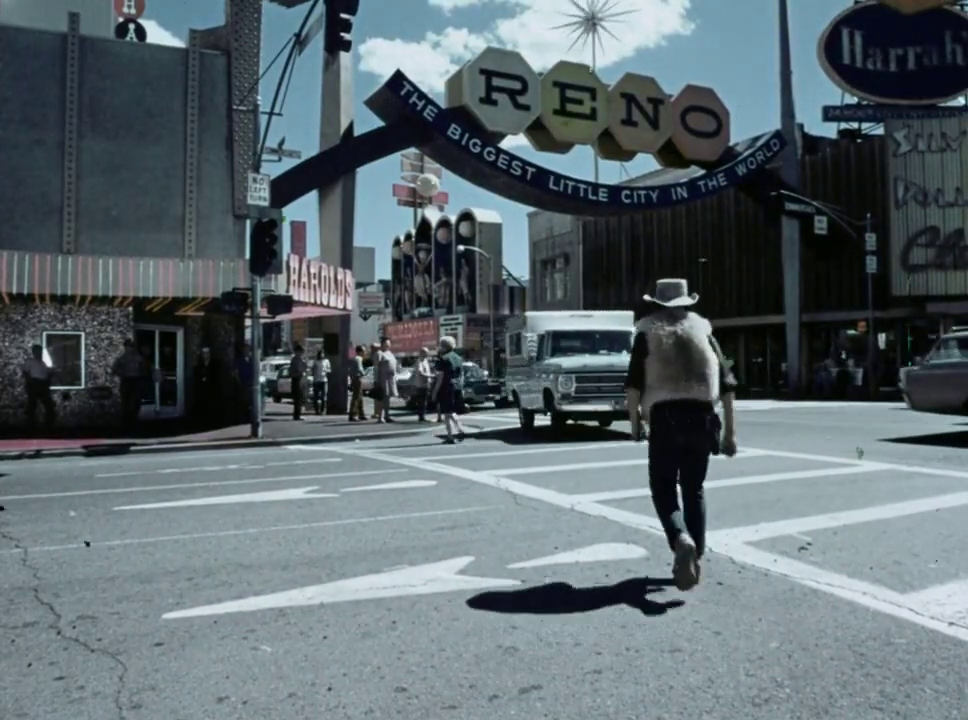
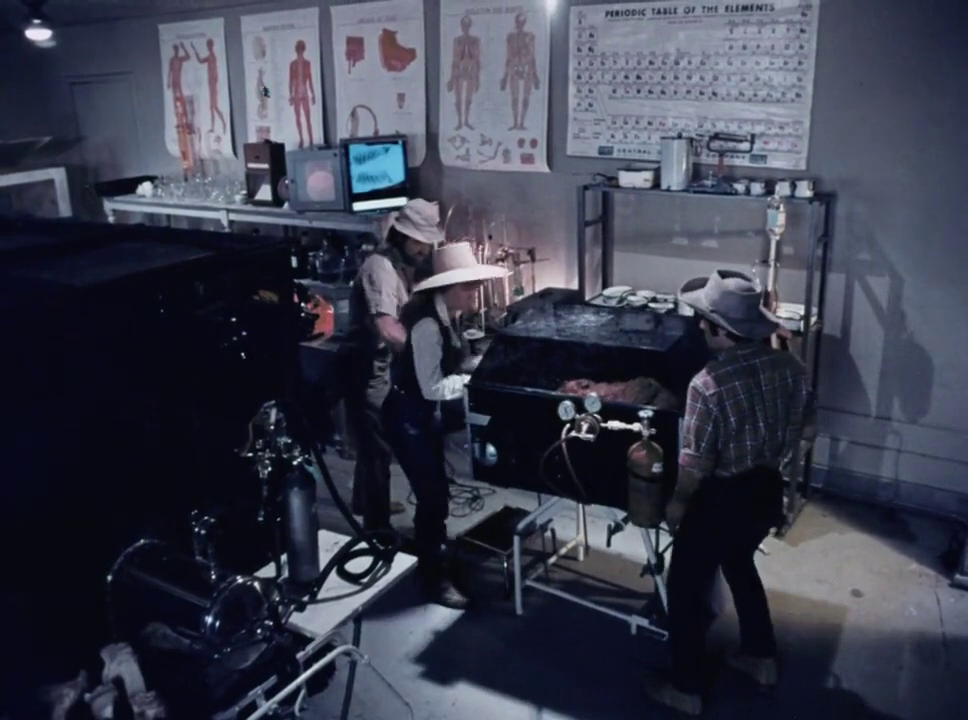
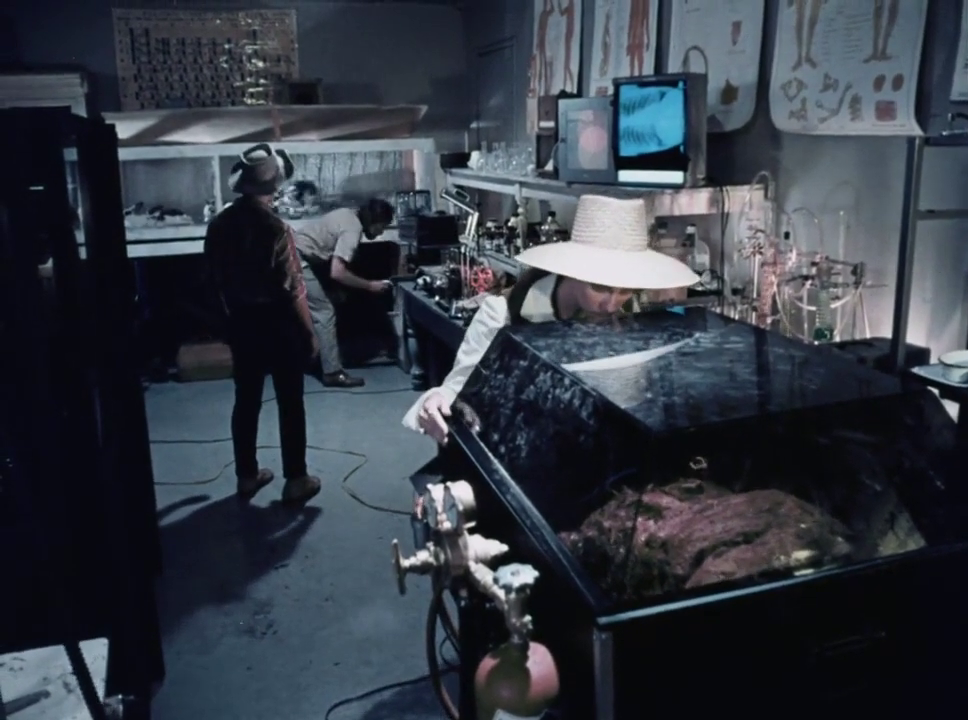
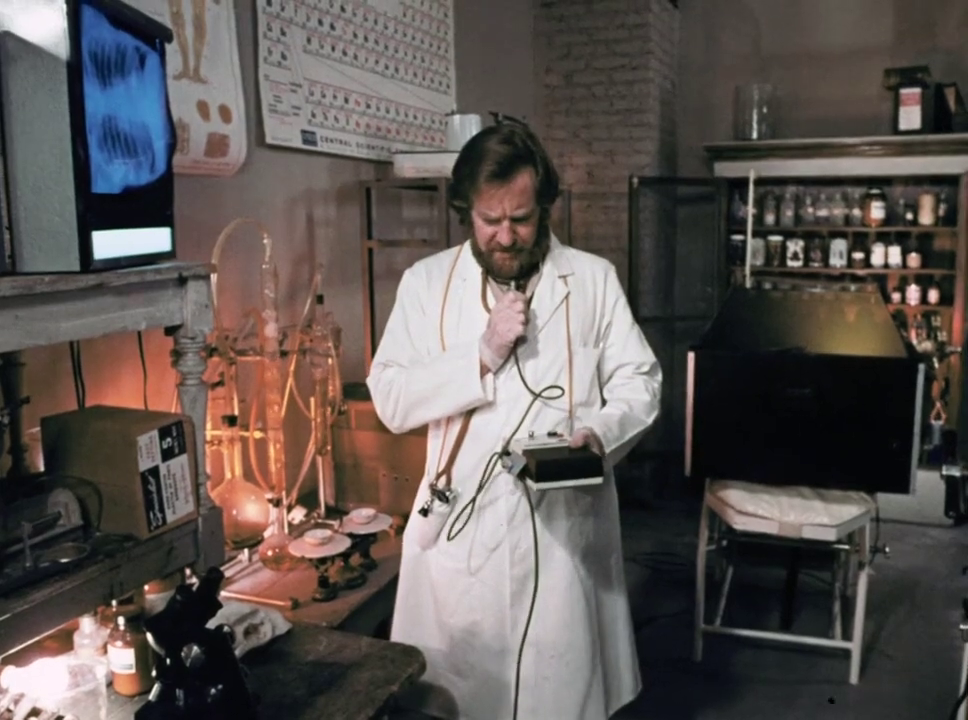
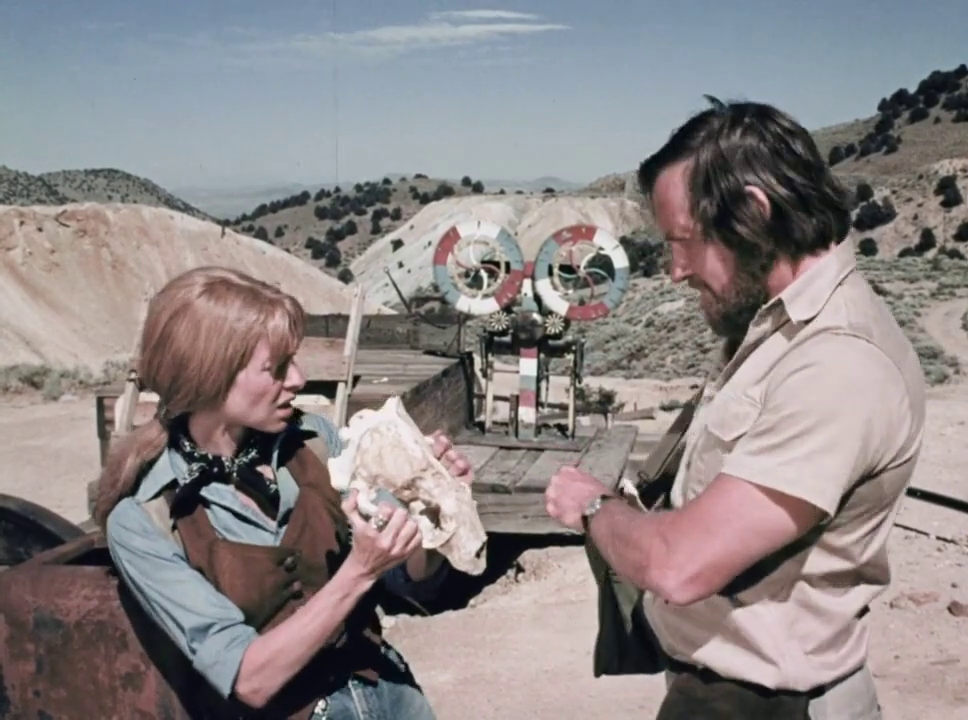
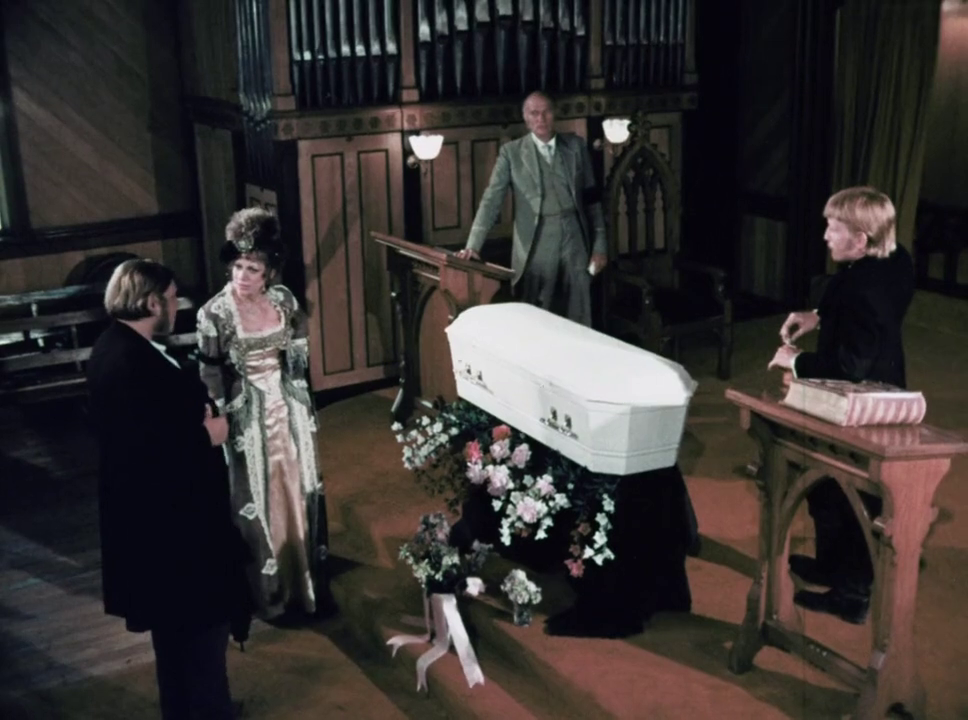
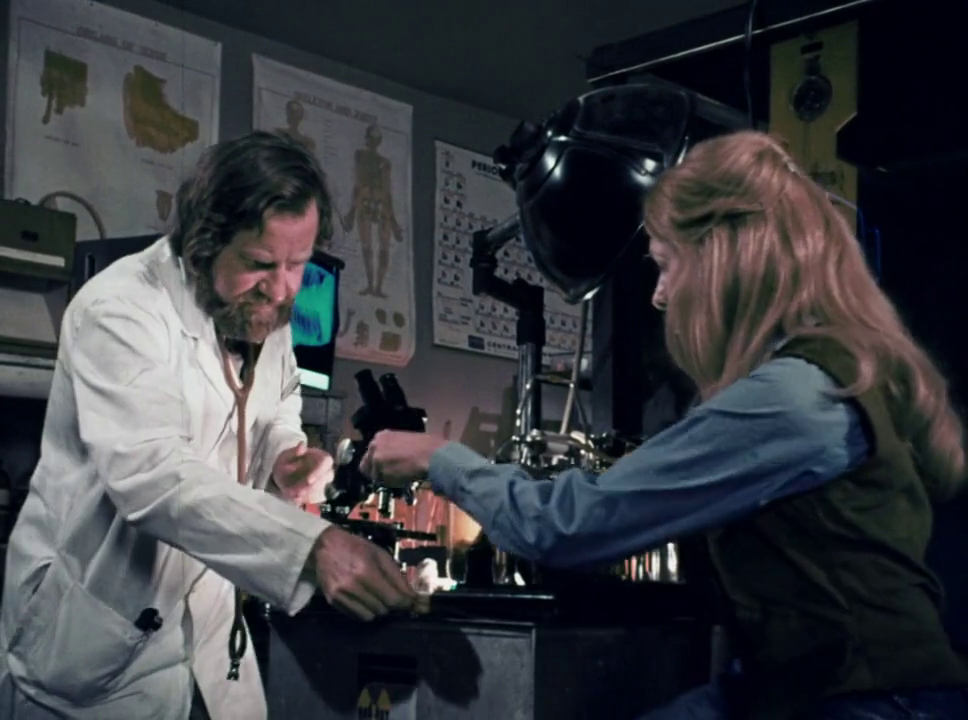
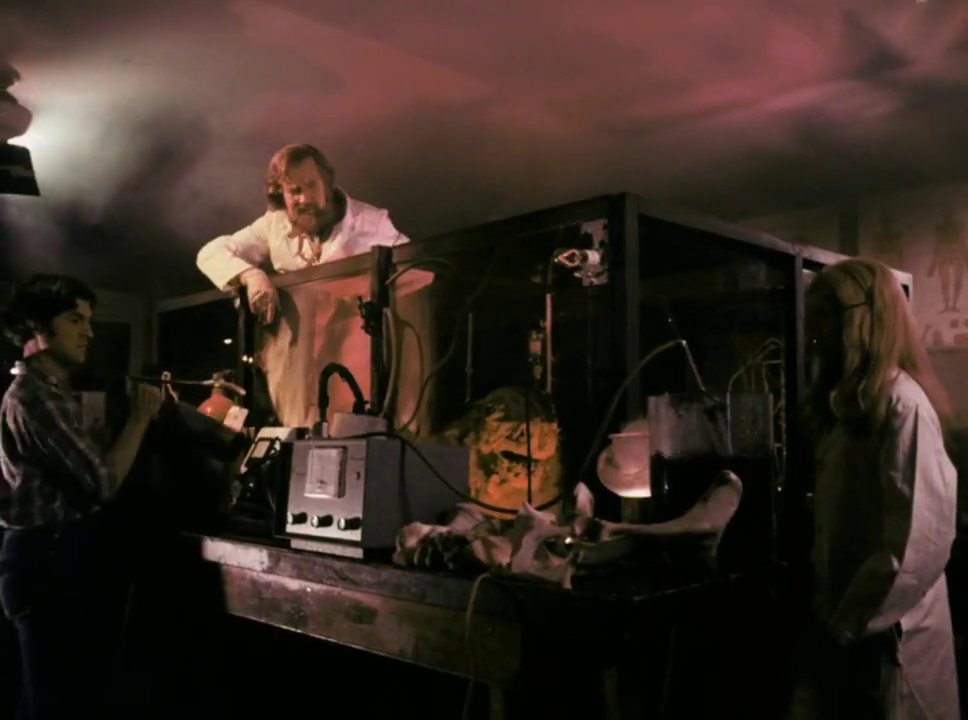
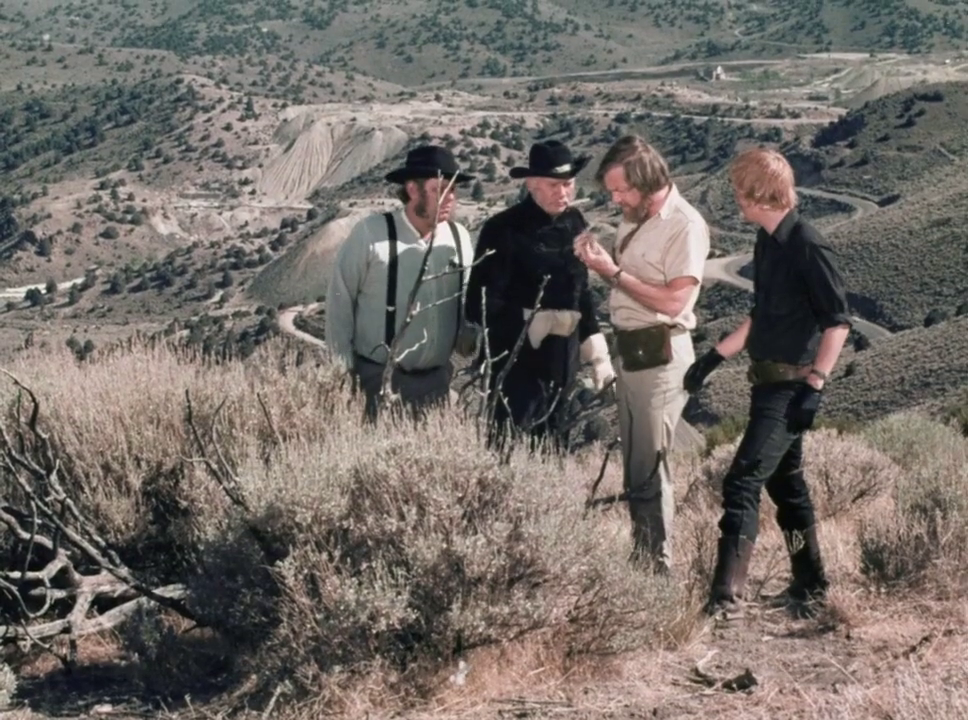
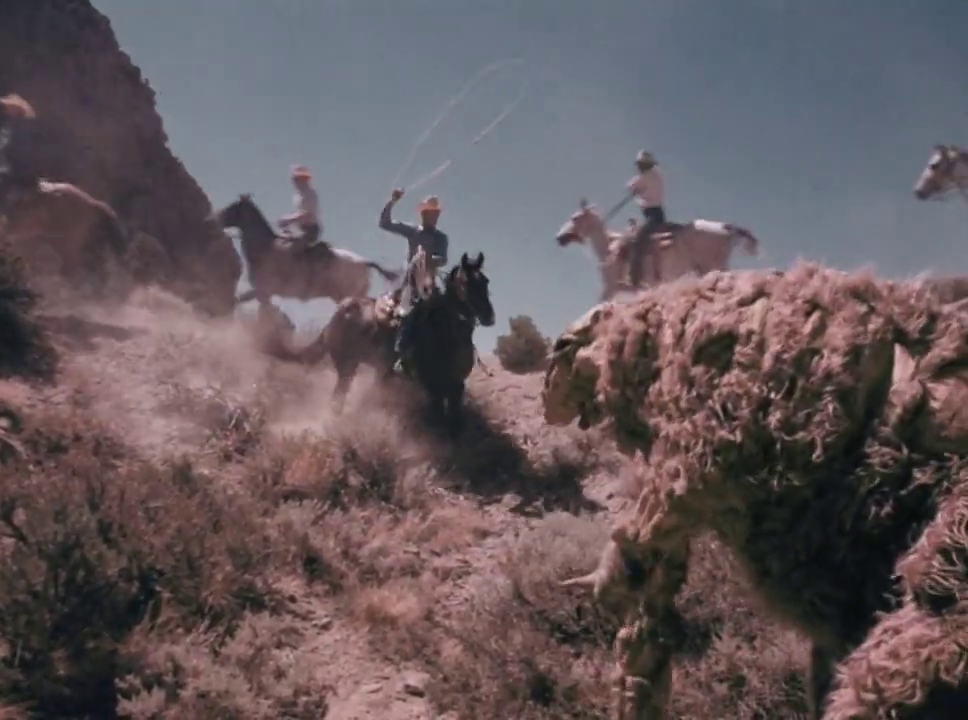
Godmonster of Indian Flats (1973)
Film review #509
Director: Fredric Hobbs
SYNOPSIS: Following a big gambling win and passing out in a drunken stupor, rancher Eddie finds a strange, large embryo on his ranch. Professor Clemens takes the embryo to his laboratory for study. meanwhile, a businessman attempts to buy property in the town for mining development, but the mayor and the secret society of the town have other ideas, as they wish to preserve the legacy of their town as an “old west” place for tourism…
THOUGHTS/ANALYSIS: Godmonster of Indian Flats is a 1973 western horror film. In the opening, we see rancher Eddie winning big on the slots and getting taken for a ride by some of the townsfolk. He is taken back home and awakens the next morning to find a large embryo. Local anthropologist Professor Clemens and his research assistant Mariposa take the embryo to incubate it, where they believe it to be the monster that has been talked about in local legends. Meanwhile, a wealthy businessman named Barnstable is trying to buy land in town to get the mines operational again, coming up against the mayor who wants to preserve the “old west” feel of the town to keep tourists coming in. These two main threads of the story are the main issue of the film, mainly because they develop almost separately from each other, only really crossing over at the end. If you want to see a “weird west” type of film consisting of a Western combined with other genres, you don’t really get that because the genres stay very separate for the vast majority of the film. It’s really difficult to figure out what is going on in the story or what the motivations for the characters are when there are all these unconnected things going on. The film sets itself out as some kind of western horror (judging by the title), but most of the film sees the monster stuck in a laboratory, and instead focuses on the goings on of this dusty town. There’s definitely a lot of effort put into creating the atmosphere of an old west frontier town in the Southern U.S., and it does set it up fairly well in the beginning, but when it comes to building a set-up and characters around it, there’s very little cohesion and direction to drive the film.
There’s plenty of characters that are laid out and the setting is constantly built-up through the expansive shots of the landscape, and the dusty, isolated town. There’s definitely a vision in that regard, but there’s so many strange decisions with respect to the story that it becomes a series of bizarre events that are consistently inconsistent. The scene with the funeral of a dog whose death was staged to make Barnstaple look bad is just so absurd I don’t know how you’re supposed to take it seriously. The acting is also pretty dire so as to alienate the viewer from the story even further. The monster itself we see in bits and pieces until the end of the film, where we are treated to the form of a deformed, mutant sheep of some sort. Trying to make a sheep look threatening seems like a fruitless endeavour, but they certainly tried regardless. It always, however, looks like a sheep, and so isn’t that scary or horrifying.
There’s definitely some arguments for it being a “so bad it’s good” film, with the pure weirdness in the story and it’s random jumps in tone that come out of nowhere. In this way, it is certainly entertaining and not boring, but you will be constantly wondering how all this fits together. I feel like there’s definitely a vision that grounded the production of this film, specifically in brining this old west town and it’s population and culture to life, but anything on top of that, from the story, the characters, and the whole monster thing are so convoluted that it’s difficult to take it seriously. Overall, Godmonster of Indian Flats is just plain weird: it has all of these things it wants to do, but no idea how to bring them together. The parts where the film tries to take itself seriously are offset by the incomprehensible plot, unimaginative characters, and flat acting. Maybe some people would describe it as “so bad it’s good”, and there are certainly some points where that is the case, but on the whole, I think it just falls short of having that entertainment value.
-
#508 – Star Wars Episode VI : Return of the Jedi (1983)








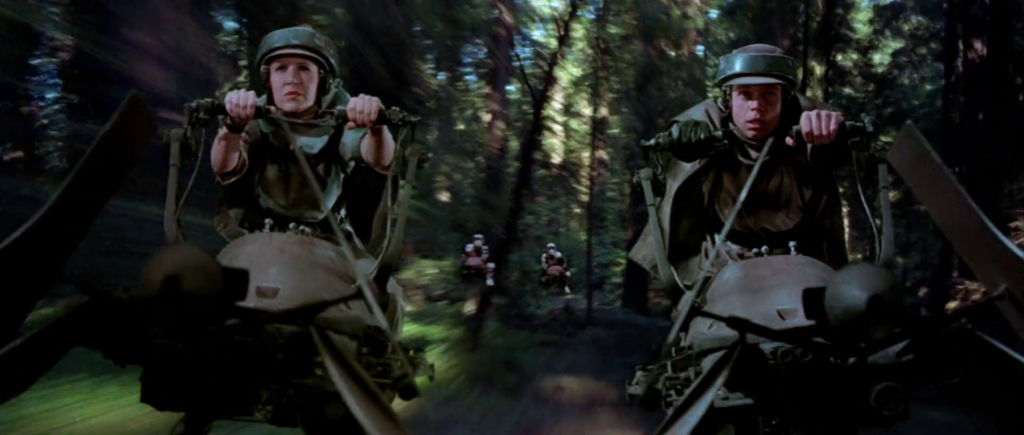
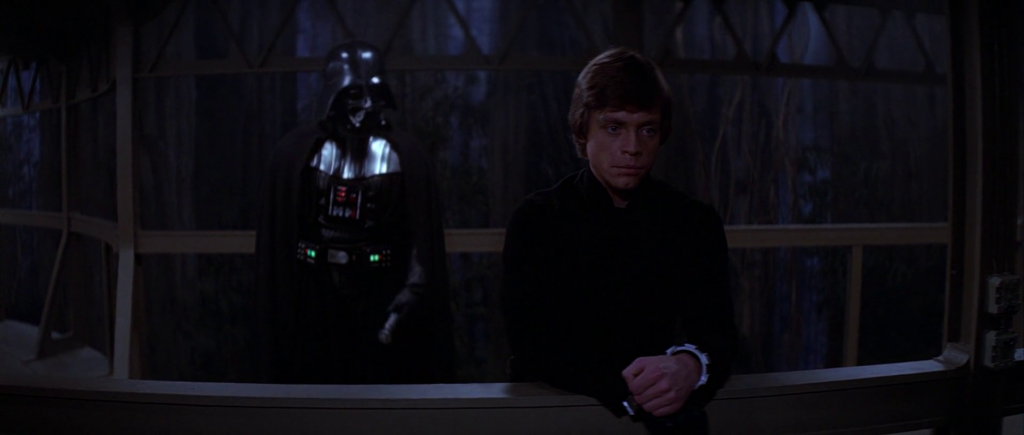
Star Wars Episode VI: Return of the Jedi (1983)
Film review #508
Director: Richard Marquand
SYNOPSIS: Luke Skywalker and his friends attempt to rescue Han Solo from the clutches of Jabba the Hutt, meanwhile, the evil Galactic Empire are busy building a new death star, leading to a battle between the empire and rebels that will determine the fate of the galaxy…
THOUGHTS/ANALYSIS: Star Wars Episode VI: Return of the Jedi is a 1983 science-fiction film and the final film in the original Star Wars trilogy. Set one year after the events of previous film, in the opening we see Luke Skywalker and his friends attempting to infiltrate the palace of Jabba the Hutt and rescue their friend Han Solo, who was frozen in carbonite at the end of the previous film. Like in Episode V, the gap between films presents a bit of an issue plot-wise, perhaps more so here. For example, the opening title crawl just casually outlines the fact that the empire is constructing a new death star, which was not hinted at or set up at the end of the previous film, and to just reveal this significant plot-point (regardless of it being a bit recycled from the first film) as a bit of text in the opening seems to dilute the impact of what could have been a significant moment in the film. The first act of the film as mentioned takes place one year after the events of the previous film and is essentially a rescue mission to free Han Solo. Again, there’s issues with the plot that immediately surface: why did they wait a year to rescue Han Solo? Why do it now when the empire is constructing a new death star? The Empire Strikes Back had a similar problem with it’s three-year gap between it and A New Hope, where it seemed like the relations between the characters hadn’t changed much in three years. It just seems to be a consistent thing in these films that the gaps between them aren’t well thought out (perhaps due to the fact that the trilogy wasn’t planned out in advance). The first act itself is a good set-up, with all of the heroes working together in their own ways to help free Han Solo, and it closes the arc with Jabba the Hutt set up over the trilogy, but in the context of the wider story it seems like it takes up too much time when the fate of the galaxy is on the line and the main rebels take time out to save one person. The scene with Luke taking a big detour to see Yoda, just so he can confirm that Darth Vader is his Father, is of little significance, and I’m not sure why it was kept in. Apparently it was filmed because they needed to confirm that Vader wasn’t lying about him being Luke’s Father, but as a viewer, this didn’t seems like an issue that arose for me, and even if it was, it could have been handled some other, quicker way, instead of making a big detour, and an extended death scene that just tries to be overly-dramatic for some reason. The film refocuses itself after this and sets the stage for the final battle well and also giving enough space for your favourite characters, but there are definitely some issues with the story which are harder to overlook than the ones in The Empire Strikes Back.
All of your favourite characters return in the film, and they are for the most part consistent with what we know about them. There’s not much development, but I think everything is pretty set up for the climax character-wise. Luke attempts to come across as a hardcore Jedi now as he calmly walks into Jabba’s palace and decimates him with his plan, but Hamil as an actor still doesn’t have that feel of someone who is bad-ass, or can lean into the more dramatic moments, like Yoda’s death. Leia’s character doesn’t have a specific arc, but her response to finding out that she is Luke’s sister, that she has “somehow always known” is a bit weird, particularly in the context of the love triangle between her, Luke and Han that was part of the first film, and her kissing Luke on screen twice. Apart from that, she’s still a strong character, but the plot just doesn’t seem to affect her on a personal level. Han’s character feels pretty diluted in this film: he mostly just reacts with grumpy quips about every situation. he’s still one of the most definitive characters, but his character just isn’t doing much new. Apparently one of the original plans was to have him die, but George Lucas overruled it on account of the potential to hurt merchandise/action figure sales. You can probably trace a lot of the decisions about the film to Lucas being concerned about merchandise sales (which was his main source of income for the films). The new characters, such as the new stormtrooper designs on Endor, Admiral Ackbar, and especially the Ewoks would no doubt drive a new wave of merchandise sales, particularly among younger people.
In terms of the villains, Jabba’s villain arc is quite nicely closed off, even though he is only mentioned and appears briefly throughout the films. Nevertheless, we have a good idea of who he is and what he does. Vader’s story in this film shifts a fair amount: he changes from a ruthless ruler killing his own people in the previous films, to a bit of a lackey to the Emperor in this one. Maybe this again an attempt to not make him too scary to children, but also I guess it ties into the sub-plot of Luke attempting to “save” his Father and turn him away from the dark side. This is something that just suddenly happens in this film, and is in no way is Vader set up as someone who can be saved in the previous films, so it seems like an odd direction to take it. The Emperor, who we see in the flesh for the first time in this film, takes full control of the villain role, but we know so little about him, and the fact that he interacts only with Luke makes his impact severely limiting. I’m not sure what we can say about Boba Fett: the entire trilogy seemed to set him up in the background as a fearsome bounty hunter, but he meets his end at the end of the first act without really doing anything, and just being shot by Han in his half-blind state. I’m going to designate him as another victim of being an action figure first and a character second.
When the film gets going with it’s space battles and lightsaber fights, it has that same energy that Episode IV had, and plenty of spectacle and suspense. The film works best in this simplicity, where inconsistencies in the plot don’t slow it down. The ships look great, the puppetry is good, and everything is vibrant and colourful when it needs to be. The soundtrack is an improvement over Episode V simply because it doesn’t use the “imperial march” every five minutes.
I’ve been looking at these Star Wars films as a non-fan, and of the position that I’m probably never going to change my mind, so they may seem overly-critical. Return of the Jedi is a decent action/adventure film that is simple, but effective. However, it is much easier to pick out issues with the story here than in The Empire Strikes Back: there’s a lot of decisions in the script I’m really not convinced by, and there’s a lot of moments where the film plays it safe (placating Han’s character, downgrading the threatening Vader), or there’s definitely an eye on introducing new characters to make merchandise from. It’s essentially just more Star Wars, so if you like that, then you’ll like this, but even fans can certainly find things which are lacking (not just the annoying ewoks).
-
#507 – Star Wars Episode V: The Empire Strikes Back (1980)


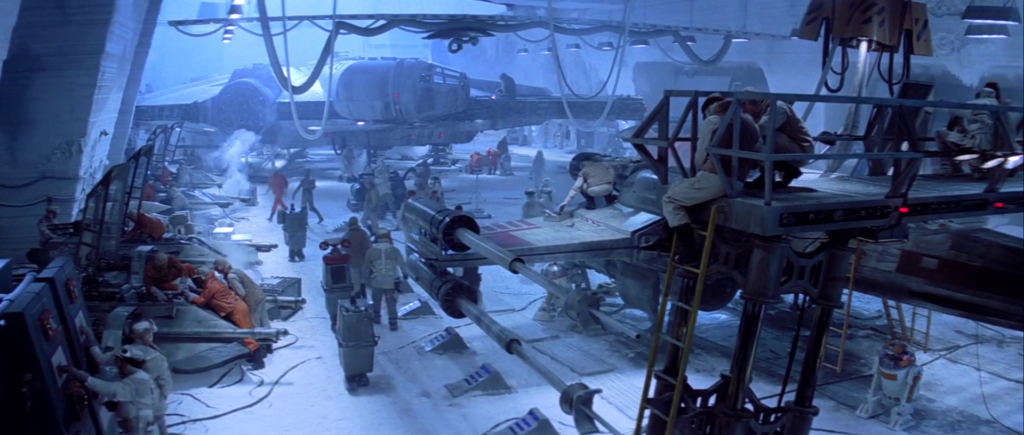







Star Wars Episode V: The Empire Strikes Back (1980)
Film review #507
Director: Irvin Kershner
SYNOPSIS: Three years after the rebel alliance successfully destroyed the galactic empire’s death star battlestation, the empire has been mercilessly hunting down the rebels and chasing them across the galaxy. The empire has chased them to their latest base in the Hoth system, and begin their assault. Luke Skywalker finds he must fulfil his destiny to become a true Jedi, and his friends evade pursuit from the empire as the stakes are elevated for all of the heroes…
THOUGHTS/ANALYSIS: Star Wars Episode V: The Empire Strikes back is a 1980 sci-fi film and the sequel to the original 1977 film Stars Wars Episode IV. Set three years after the events of the previous film, we find the heroes of the first film hiding out on an ice planet with the rest of the rebel alliance, with the Empire in pursuit. Following their success at the end of the previous film, the title of the film quickly comes to fruition, with the evil galactic empire striking back with overwhelming force. It contrasts quite a bit with the ending of Episode IV, which felt very much like a decisive victory, but then again had Darth Vader survive and showed nothing of the fallout from the Rebel’s victory. The idea of there even being a sequel after the first one was very much in doubt, so it’s fair that there would have been a lack of foreplanning in that regard. The Empire Strikes Back immediately raises the stakes in the opening act, and thrusts our heroes back into action, giving them new motivations and resolve. There’s very little breathing room in the film’s script, and nearly every moment is filled with action and energy. From a story standpoint you could probably cut the Hoth battle down fairly easily, but it’s more of a spectacle than a story impetus, and opening the film with a big action sequence will quickly satisfy those looking for an entertaining film rather than hard science-fiction. Another vast improvement in the story is how the story isn’t stringed together by a series of huge conveniences of characters being in the right place at the right time. There’s a bit of that (Such as Luke happening to crash land at the exact part of a whole planet where Yoda is), but otherwise it’s not much of an issue here.
When Empire Strikes Back was released, it received very mixed reviews: the change in tone from a more simplistic good vs evil story to a more complex world-building and darker tone might have alienated those who were simply looking for more of the same. However, that opinion has shifted quite significantly over the years, becoming a model for how sequels should be made. The film ups the stakes, builds the world, and shifts the tone to provide a new experience. The changes won’t be for everyone, but some amount of change is necessary to keep things fresh and justify actually making a sequel. Furthermore, this film has become regarded as one of the best in the series for these reasons, and it’s accomplishment in turning a fairly simple story into a franchise. The darker tone might be seen as symbolic that the series has “grown up” in some way, and that certainly seems to be what The Empire Strikes Back has been going for.
One thing that I noticed right away with regards to the characters is that even though three years have supposedly passed between this film and the last, the main characters don’t really seem to have changed in those three years. Their relationships all seem to be at a standstill waiting for this film to start. For example, the Luke-Leia-Han love triangle still seems to be a thing, which is something that seems an odd thing to string along for three years. Also that Han has still not paid Jabba the Hutt the money he is owed, despite it being stressed that it was a bit of an urgent matter previously. Apart from that, we get to see more of the character’s backstories and development, where they really start to emerge from their typical roles. Mark Hamil definitely delivers a much better performance than in A New Hope, and it’s clear to see he has been working on his skills. The new characters Yoda and Lando add in some more complexities, and Yoda is played very straight, contrasting with his appearance and clownish antics when he first appears. Obviously the big revelation that (spoilers) Vader is Luke’s Father is the biggest twist in the film, it’s definitely just a sting at the end of the film that sets the stage for the ending, with the heroes on the back-foot and out of options, ready for a redemption in the sequel. We still know very little about Luke’s Father with regards to what he did or who he was, so it doesn’t really change what we know in terms of the story, but yes it is definitely a high drama moment.
The film keeps the very distinct aesthetic divisions between the Empire and the rebels, with the sleek, clean Empire ships contrasting with the more dishevelled, cobbled together Rebel devices. The sets have plenty of detail and complexity to build its world. It gives sci-fi fans plenty of spaceships, lasers, and the like, while still having a sensible story to follow. As I’ve mentioned before, I’m not a Star Wars fan, and there’s probably no film that is going to make me change my mind. The flaws I see in this film stick out because of this, but I can also see how this film works as a successful sequel: it expands the world, deepens the characters, and raises the stakes to give you more of what you like (if you already like it).
-
#506 – The Hyperions (2022)




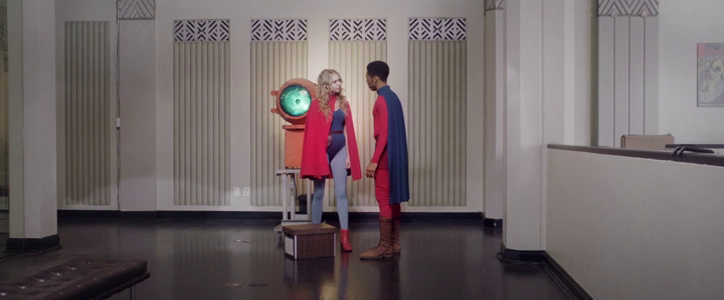
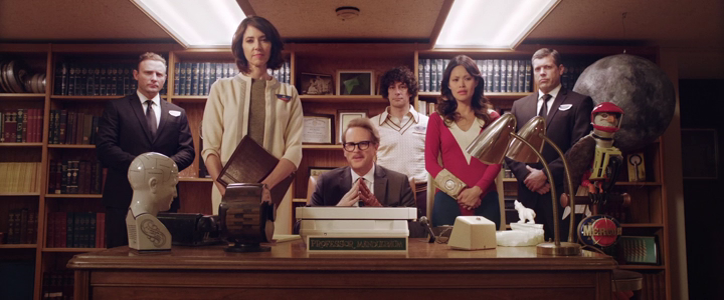
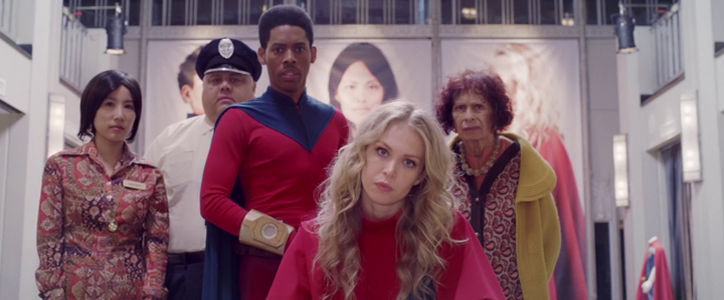
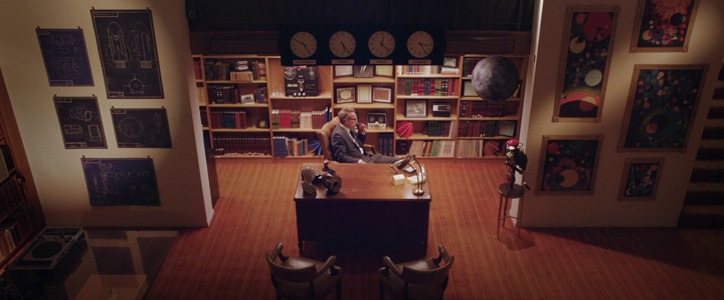
The Hyperions (2022)
Film review #505
Director: Jon McDonald
SYNOPSIS: In 1960, Professor Ruckus Mandulbaum invented the Titan badges: special devices that when worn could turn anyone in to a superhero. He adopted two young orphans and a third person to become a team of superheroes. As time went on, different heroes took up the titan badges as the original heroes moved on with their lives. In 1979, two of the original superheroes want their badges back, and take hostages until Mandulbaum agrees to release them…
THOUGHTS/ANALYSIS: The Hyperions is a 2022 sci-fi film. The film revolves around a group of people given superpowers by Professor Mandulbaum and his inventions, the titan badges. In 1979, nearly twenty years after they were first invented, two members of the first generation to wear the badges stage a robbery to try and get them back, realising that they need Mandulbaum’s help to do it. Despite looking like a superhero film on the surface, it focuses more on being a drama and the relations between the characters, with a hint of light-comedy thrown into the mix. The plot is pretty threadbare, and the whole premise of the film is laid out early on for the drama to unfold. The plot tries to raise the stakes by revealing the motivations of the characters, but it never really adds anything surprising or captivating to change the state of play. The constant back and forth with flashbacks revealing parts of the story really staggers any kind of progression as well. The pacing, especially near the end, is very rough.
Being a superhero film actually plays very little role in the overall story, and as mentioned it’s very much focused on the characters. Maybe the point is to do something “different” with superhero characters and look at their humanity, but this is something that has been done to death with trying to show a “different” side to them outside of their superhero persona. While this usually results in making them angsty and tormented in comparison to their heroic status, The Hyperions seems to instead try to humanise them by focusing on the relationships between the characters, and the strain put upon them through being a superhero. Their disagreements and tensions are relatable, but maybe too much so: the superhero set-up in fact has very little effect on the content of the film, and while it can be good to have certain expectations subverted, instead the film just replaces it with…very little. The main characters have specific personalities and motivations, but the main cause of tension and drama between the characters is skirted around, and when it is addressed, is rushed and unrewarding. Aside from the main characters, there are a few support characters, but none of them really have an impact either. It is perhaps worth mentioning that this film is backed and produced by the Daily Wire, who have dipped their toes into filmmaking as a response to Hollywood’s “agenda,” in defence of free speech or something. So departing from Hollywood superhero films, they have instead used their free speech to make a film that actually says very little, which I think is quite interesting. It feels like it’s so hyper-conscious of not having any political message to preach that it just ends up being vacuous at it’s core. Superheroes are political, and they do have a message to convey: trying to erase that misses the point entirely. It might be trying to reinforce traditional family values as the solution to all troubles, which seems to be the justification of the ad-hoc ending where everything works out because they’re family, but if that is the point, then the film ends up looking seriously naïve.
One of the most unique aspects of the film is the use of a 60′s animated aesthetic that is reminiscent of Disney films. Animated characters and effects overlap with the real-world, which provides some interesting visuals, but it just feels like there’s no purpose to it as a cinematic choice: it’s not parodying it, and the film isn’t structured or feature similar characters or plot points to those films. Combine this with the recurring problem of interrupting the film along with the flashbacks, and it ends up complicating the film without adding anything of significance. The sets look good, and have a particular aesthetic with it’s 60′s technicolour vibe, but other than that nothing really stands out on that front. Some of the lacklustre elements of this film can perhaps be put down to it being a directorial debut, but there definitely is a problem with the film being reluctant to say anything of importance, and as mentioned above, I think it has something to do with the people behind it rebelling against Hollywood’s perceived “agenda” and some imagined defence of free speech to the point that it has nothing to really say. there are some good points to this film: there are some good dramatic moments and emotional scenes between some of the characters, but a haphazard structure, bad pacing, confused comedic choices, and a jumble of aesthetic choices that combine to make The Hyperions an overall dull and meandering experience.
-
#505 – Space Truckers (1996)
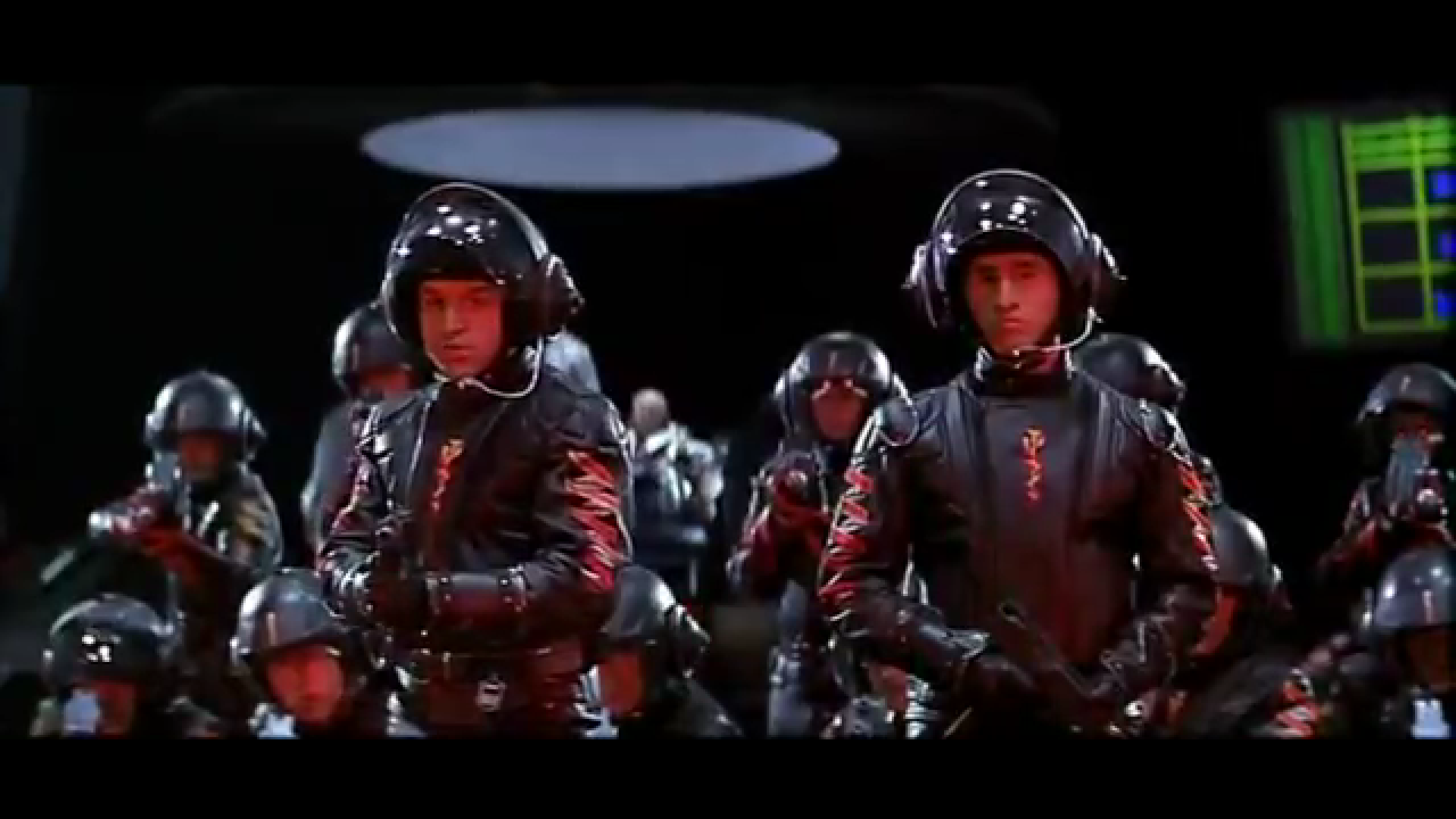

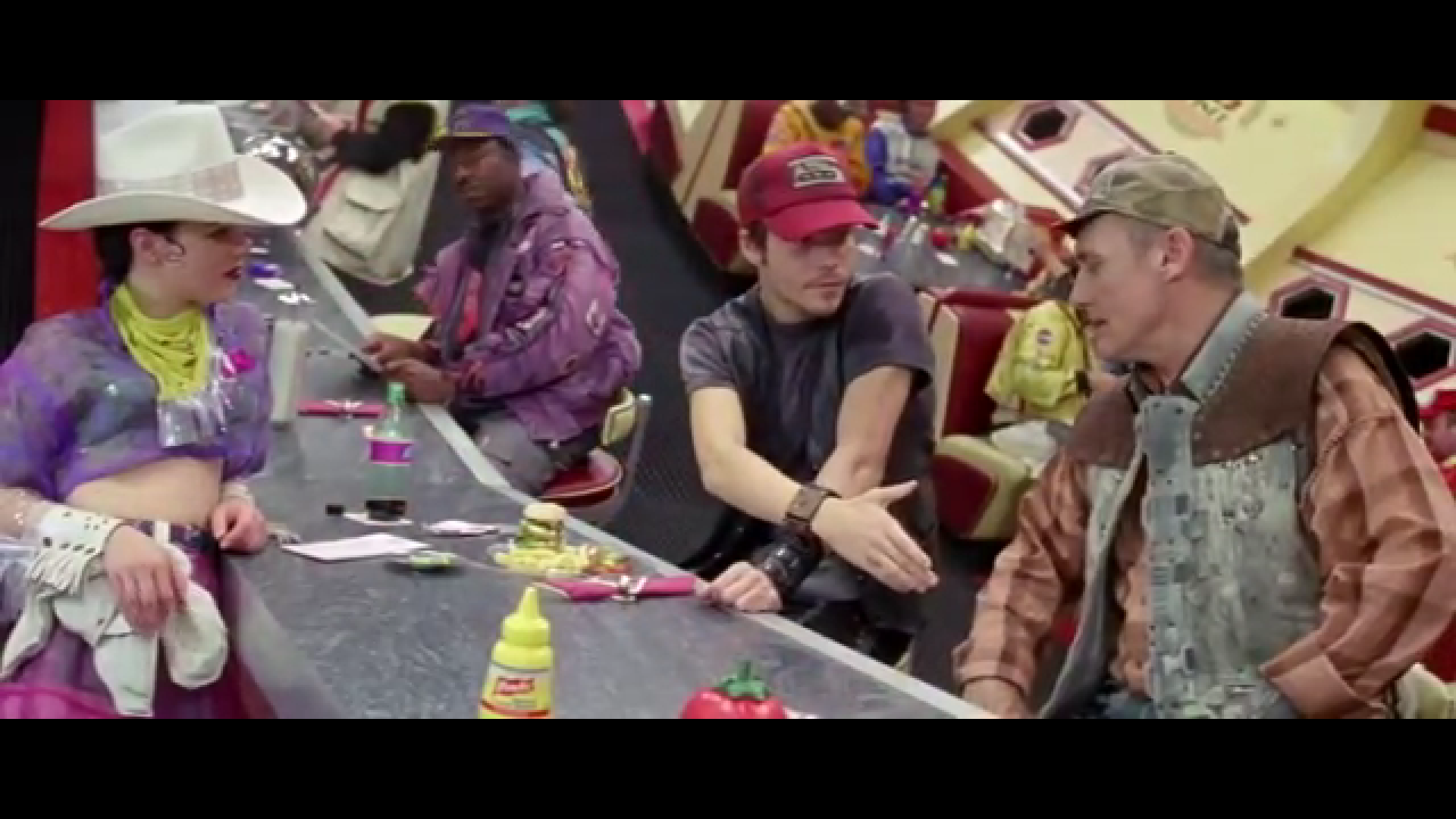
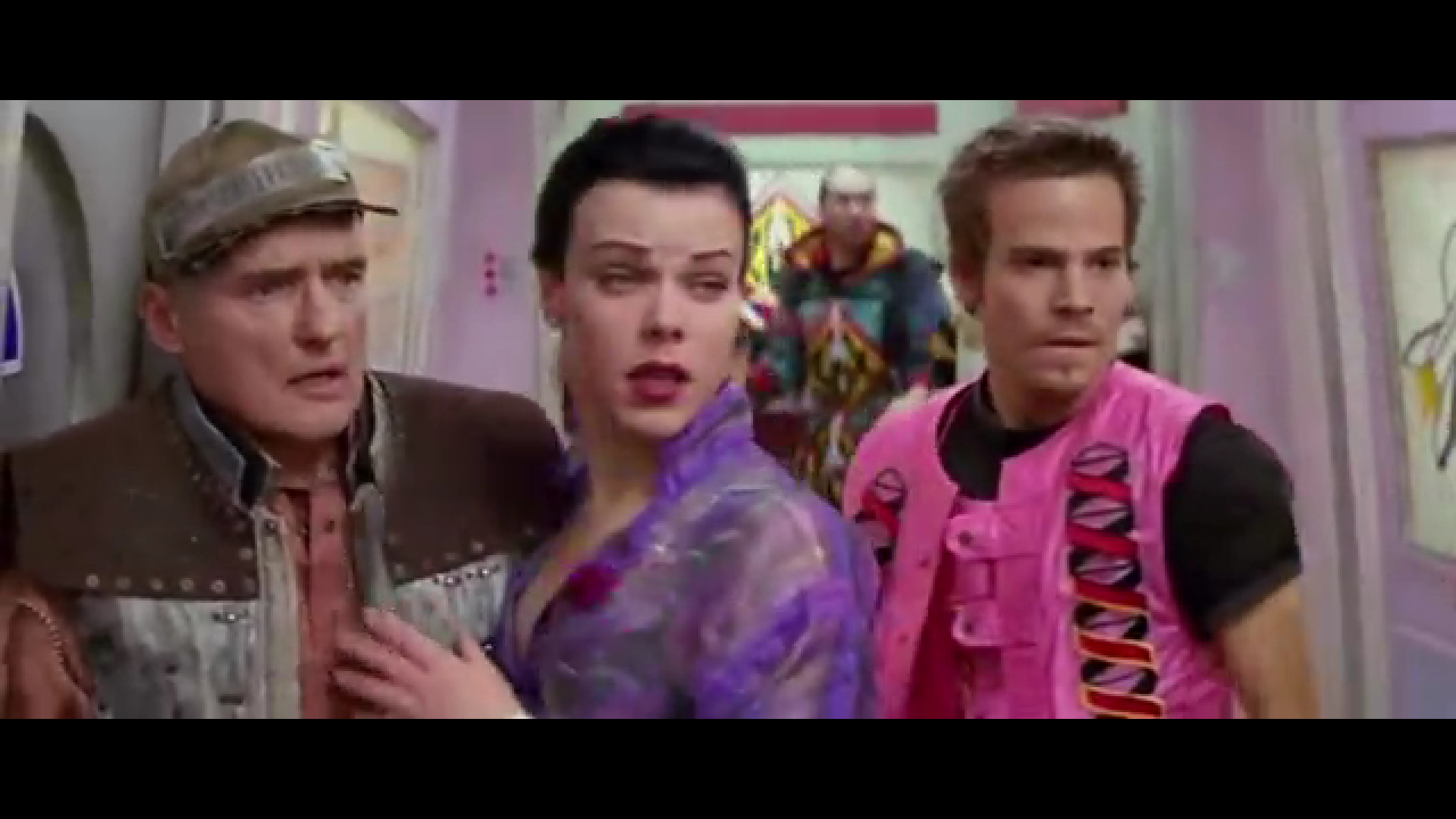
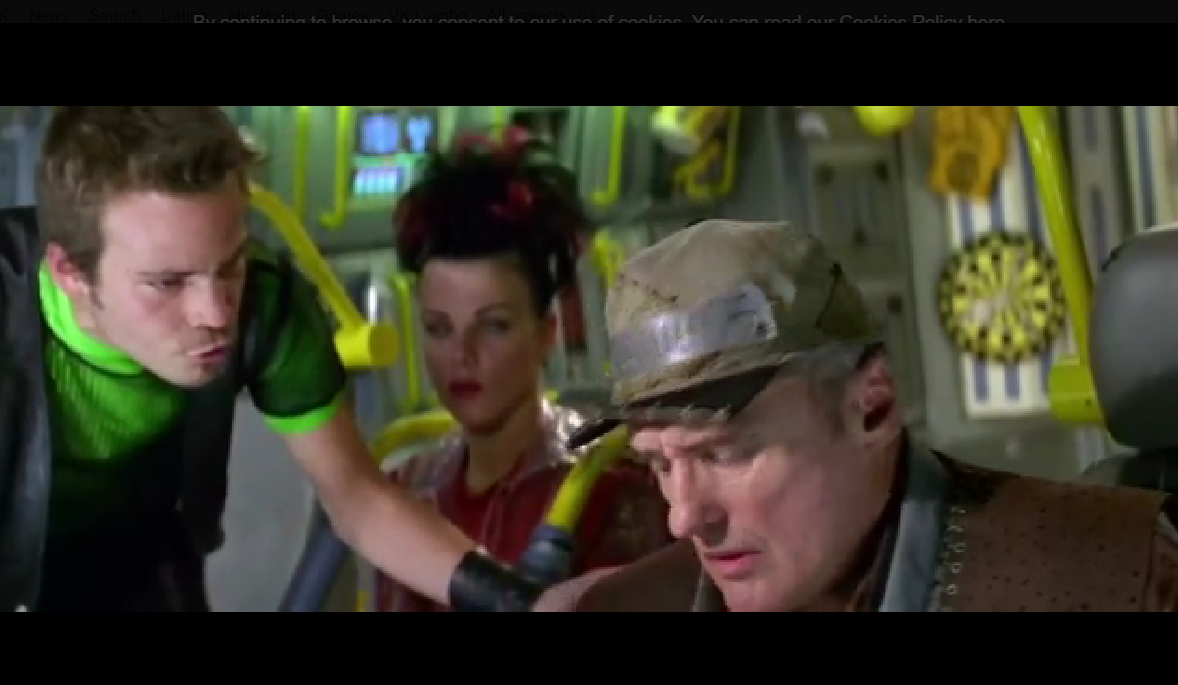
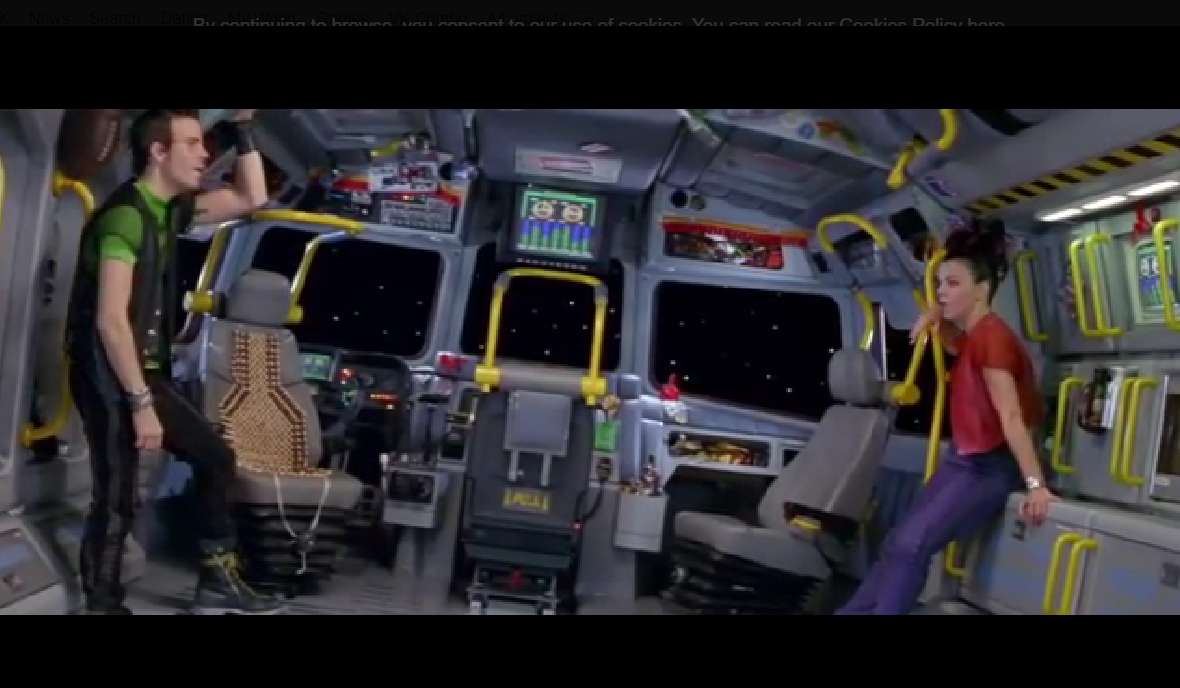
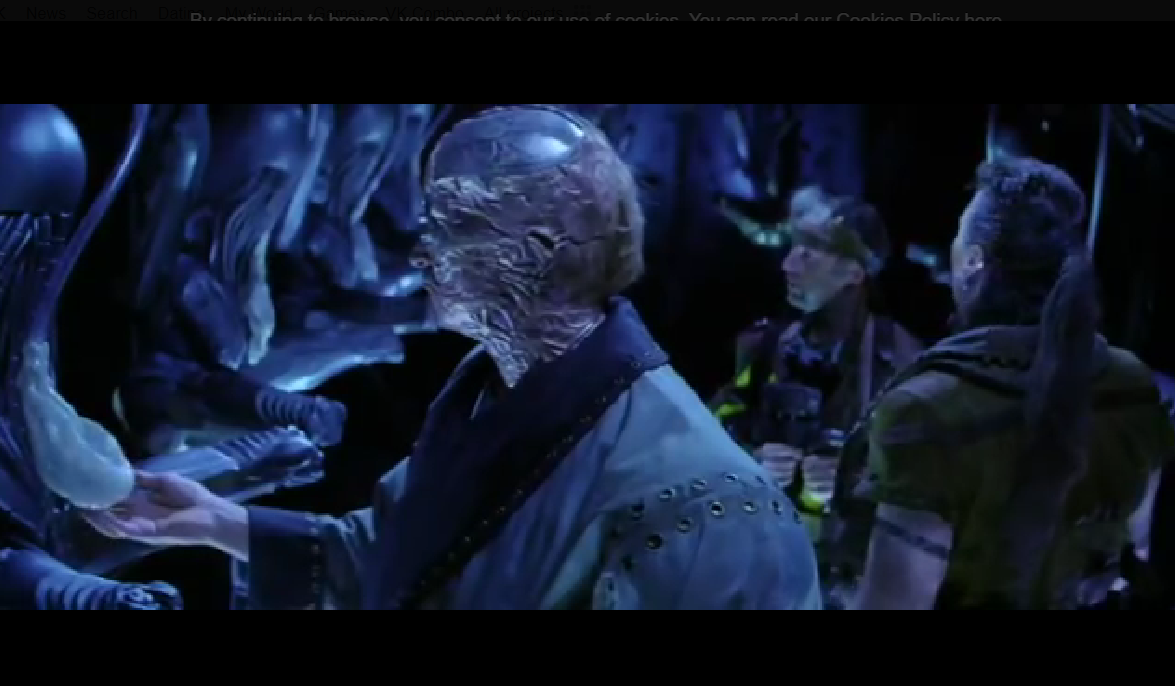
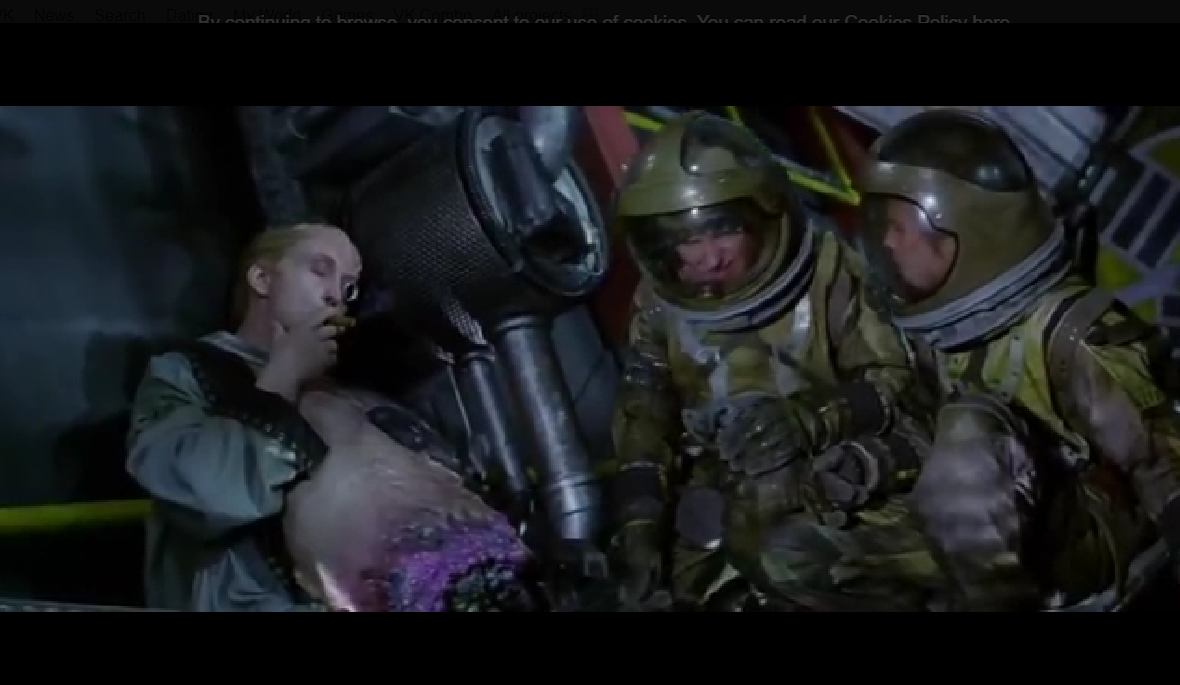
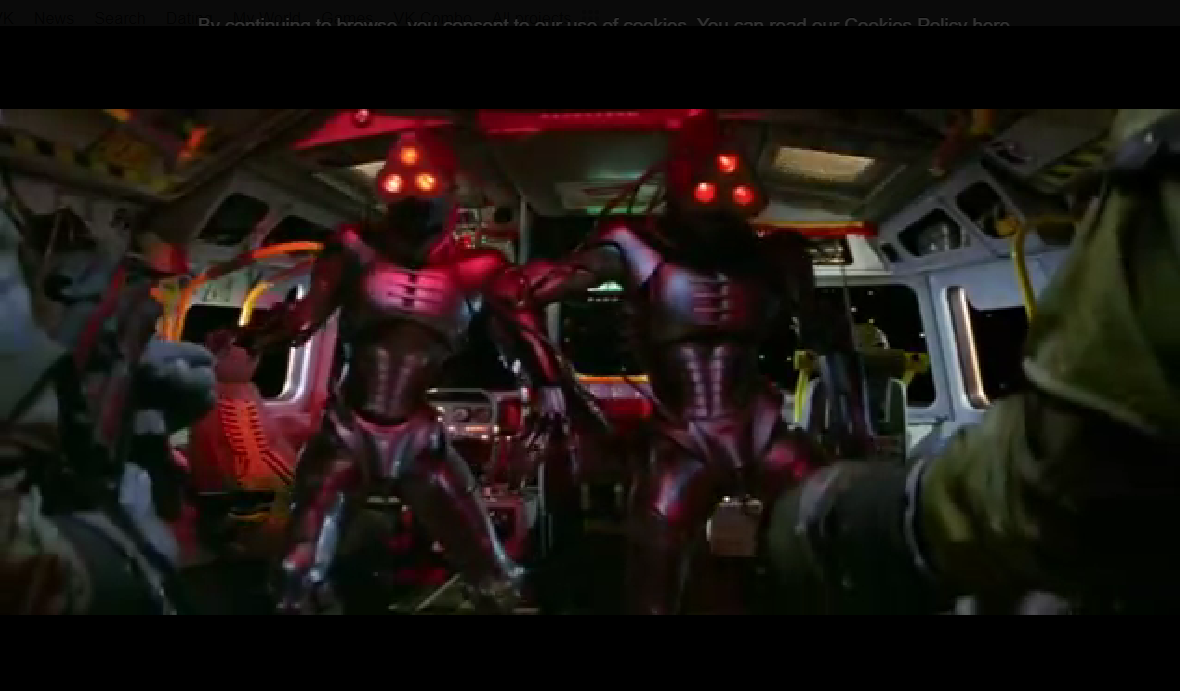
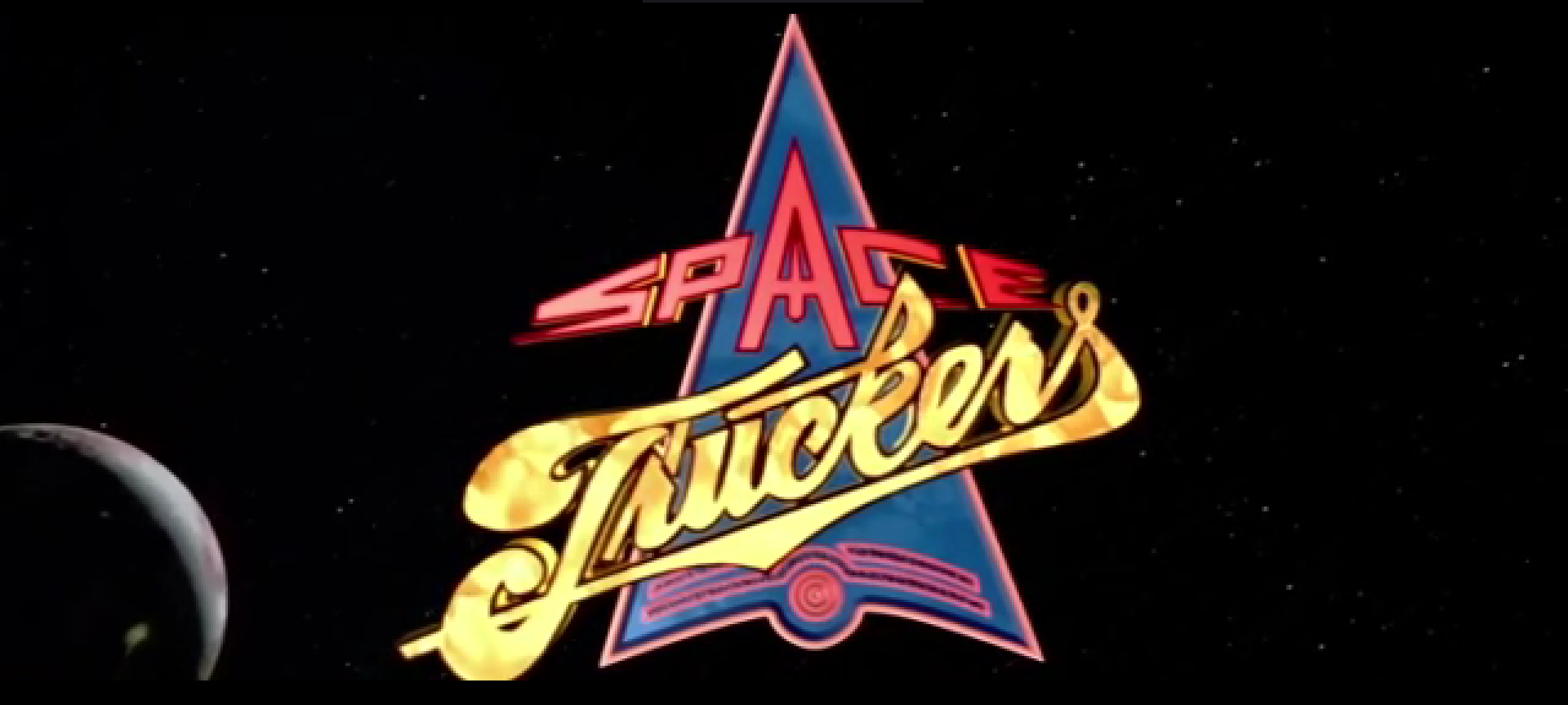
Space Truckers (1996)
Film review #505
Director: Stuart Gordon
SYNOPSIS: John Canyon is hauling a shipment of hogs to a remote space station. Failing to get paid, he takes on another job to deliver a secret and sketchy cargo to Earth. When John’s truck is hijacked by raiders, they open the cargo and inadvertently release an army of killer robots. John and his crew must stop the robots before they can get to earth and cause untold destruction to the planet…
THOUGHTS/ANALYSIS: Space Truckers is a 1996 sci-fi film that is succinctly described by it’s title: it’s about truckers in space. John Canyon (Dennis Hopper) is hauling twenty-thousand tons of hog fat to Titan Station. However, because he is late, his employer refuses to pay him the full amount. Now broke and without a job, he takes on a seedy contract to take an unknown cargo to Earth. Taking along Cindy, a waitress who needs a lift to Earth, and Mike, a newly qualified space trucker, the three set off with their cargo to Earth in this film that feels so very quintessentially 90′s. The bright colours, comedic tone give off the impression of a typical sci-fi b-movie parody, but there’s more to it than meets the eye. The story is a little threadbare and takes a while to get into the heart of the story, but it takes its time to introduce a fair amount of detail into the world. Regardless, it’s still a fairly simple story to follow, and all the plot points are familiar and fun: it’s basically just trucking in space, but it allows for some entertaining set ups and fun across the board, with even a few twists thrown in to keep things interesting. There’s a mix of comedy, action, parody and even some darker thriller elements in the film, which is a lot to take in, but it handles the constant switching well. The film obviously tries to appeal to a wide audience and not get entrenched too much in one genre or another.
The characters should feel very familiar to viewers: John Canyon, portrayed by Dennis Hopper is the grizzled trucker veteran who teaches waitress Cindy and new driver Mark about the trucker lifestyle (along with the viewer). A host of smaller support characters are vividly brought to life and serve very specific purposes making them stand out, just not in any unique way, and even though the acting can sometimes feel a little flat, on the whole the casting feels pretty solid. In classic sci-fi fashion the world it creates feels different, yet familiar: the diner where one of the opening scenes takes place looks like a typical American diner, but has a sci-fi twist with it being a zero-gravity “wheel” shape obviously inspired by 2001: A Space Odyssey. We don’t get too much information about what it is like on Earth, but that perhaps enhances the feel of being a trucker; out on the road far from civilisation.
For a middle-of-the-road sci-fi movie that meanders between action and comedy, Space Truckers has an impressive amount of effort put into it’s designs and production. The models used for the spaceships have plenty of detail to catch your attention, and they look very sturdy. The killer robots were designed by noted Japanese illustrator Hajime Sorayama, who specialises in these types of creations, and again they are brought to life brilliantly, both in terms of their construction and their choreography. There are some weaker elements in the production though: the CG is pretty bad, but thankfully it is used very sparingly, and the majority of the effects are practical. Also you can often see the strings attached to the actors when they are “floating” in zero gravity. These are minor things that don’t really distract from a fun experience though. Space Truckers isn’t ground-breaking, but it’s a good mix of genres that makes an entertaining watch, that quietly stands out in terms of some of it’s production and design.
-
#504 – Space Trucker Bruce (2014)





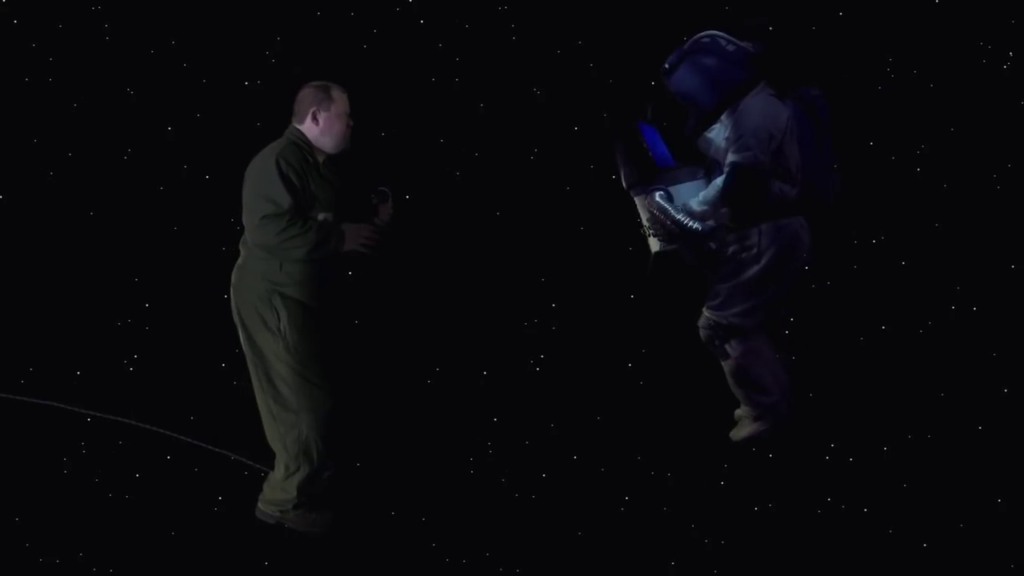



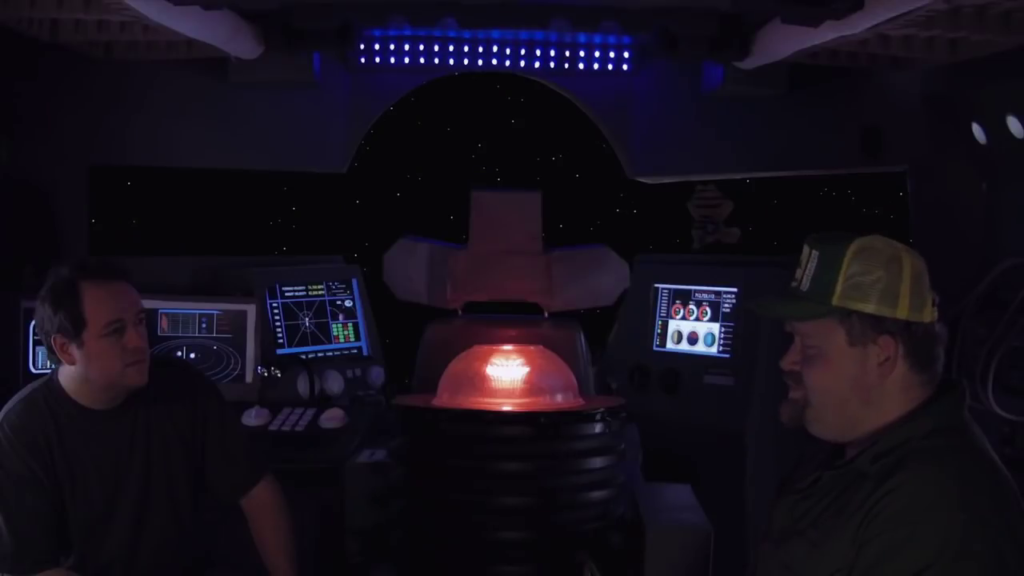
Space Trucker Bruce (2014)
Film review #504
Director: Anton Doiron
SYNOPSIS: Bruce is a trucker who is hauling hog fat from earth to Titan Station near Saturn. Along the way, he picks up a hitchhiker named max, who is introduced to the trucker lifestyle.
THOUGHTS/ANALYSIS: Space Trucker Bruce is a 2014 science-fiction film. Set in the future where humans have colonised the solar system, we see a trucker (presumably Bruce) hauling twenty thousand tons of hog fat to Titan station in his spaceship (space…truck?). Interestingly, this is also the same opening premise of the 1996 film Space Truckers, although there is no formal connection between the two. Along the way, he picks up a “hitchhiker” named Max, whose ship is stranded. Both being a long way from civilisation, the two learn to live together as Bruce continues on his trucking journey. Along the way, the plot focuses on revealing the philosophy of the trucker lifestyle as Bruce imparts his wisdom to Max about life on the road (in space). The themes in science-fiction films are often used as an analogy for issues and settings that confront us in the present, and unsurprisingly, Space Truckers is an analogy for life on the road as a trucker, hauling goods across the land as a long and often solitary job. The analogy is about as thin as the cardboard used to make the sets, but that’s not really an issue: the focus is on revealing the story and characters with a more comedic tone, and for the most part, it accomplishes that task in a way that is not laugh-out-loud funny, but quiet mix of absurd scenarios and deadpan delivery. Despite truckers having a direction with regards to where they would be delivering to always guiding them, this film gives an insight into the in-between; the lonely drive without any contact from the beginning and end, and that’s quite an interesting juxtaposition.
A small cast of characters make up the film, with most of the runtime being dedicated to Bruce and Max (who serves as the viewer’s substitute) alone in space bonding in the loneliness of space. There’s some question regarding Bruce’s sanity after being in space for so long, but his philosophy about the trucker lifestyle and “living in the moment” makes him appear zen-like and at peace. Then again, one of the characters is a tub of sour cream that may or may not be a voice in Bruce’s (and Max’s) head, so it really is open to interpretation. A few more characters turn up later on when Bruce and Max make it closer to civilisation, but they don’t change the dynamic too much. It is interesting to see after we learn about the trucker lifestyle, how it then applies to dealing with people after reflecting on it so long in the loneliness of space, and again there’s these little changes and developments which keep the film from stagnant and aimless.
One very important thing about this film is that it is a zero-budget creation, made by essentially one man in his backyard. Nearly all of the sets are made from cardboard, and once you realise it, you can never unsee it. However, it did take me quite a while to recognise this, and that is definitely a credit to how well done these sets are made. Even though the film is restricted to two or three sets for the majority of the film, it just about pulls it off, seeing as everything is set aboard the same small ship anyway. The acting is a bit flat, but it helps get the message of the film across in a low-key way. Overall, Space Trucker Bruce is a good effort at making a film with very little budget to back it up: there’s a mixture of comedy and character study that reveals the trucker lifestyle. It may not be for everyone as it lacks some direction, and some people may not be able to overlook the flat delivery of lines and the cardboard sets, but there is a certain magic in this barebones, almost one-man production that’s equal parts comedic, absurd and self-aware to be entertaining.
-
#503 – The Mystery of the Third Planet (1981)
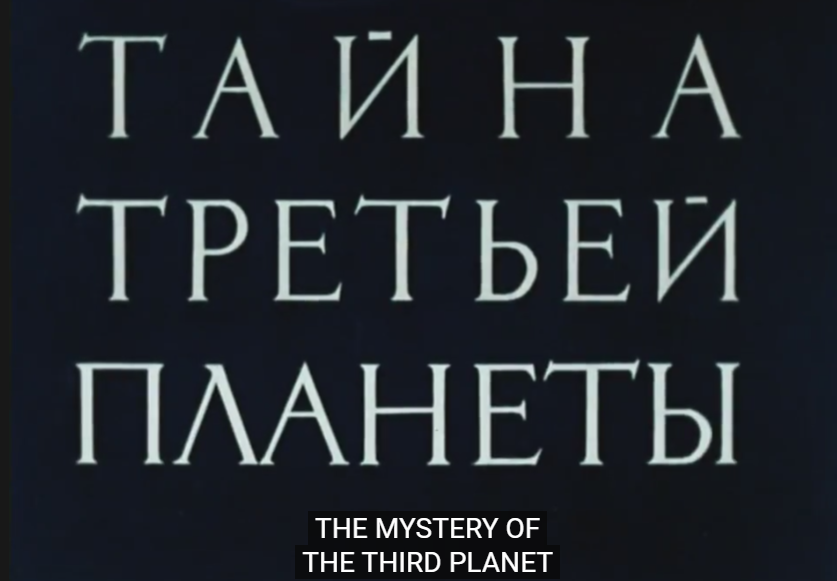
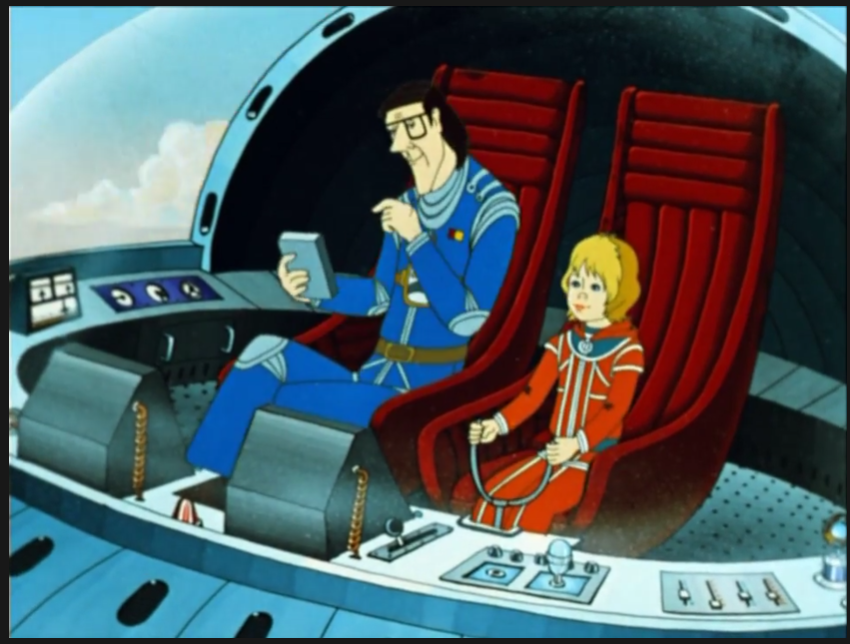

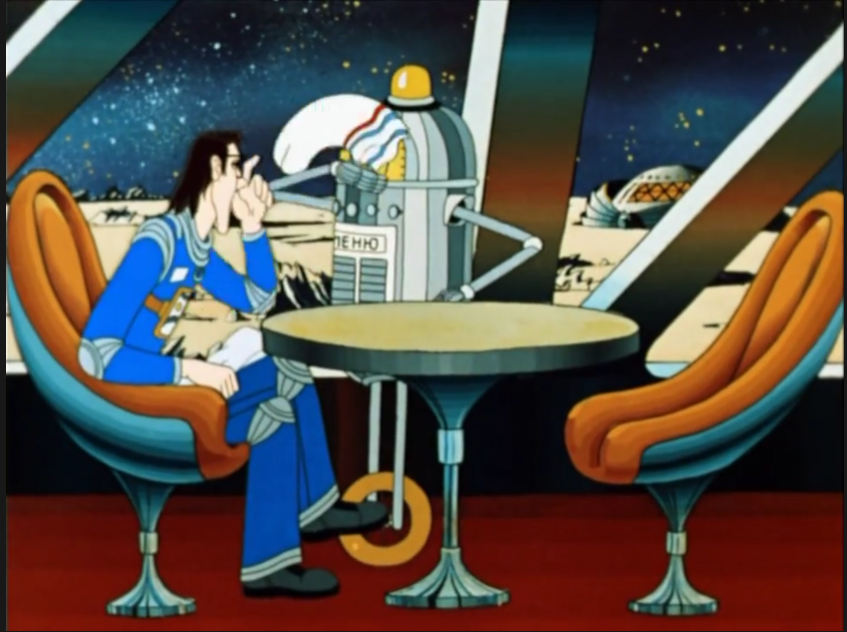
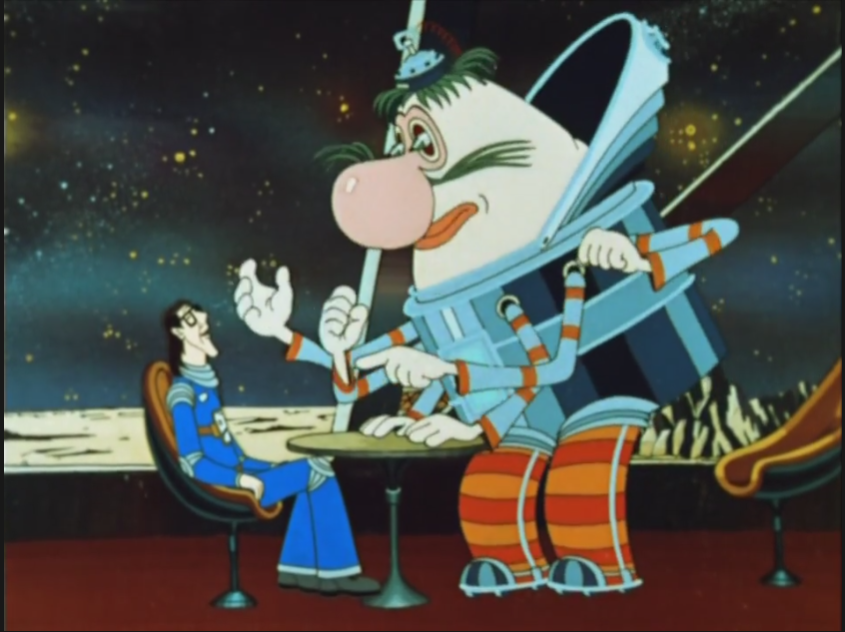
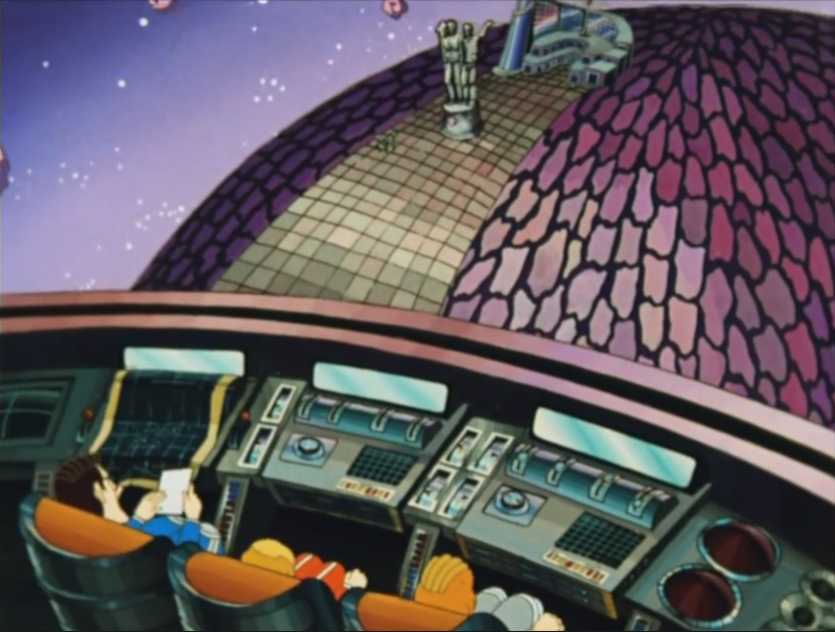
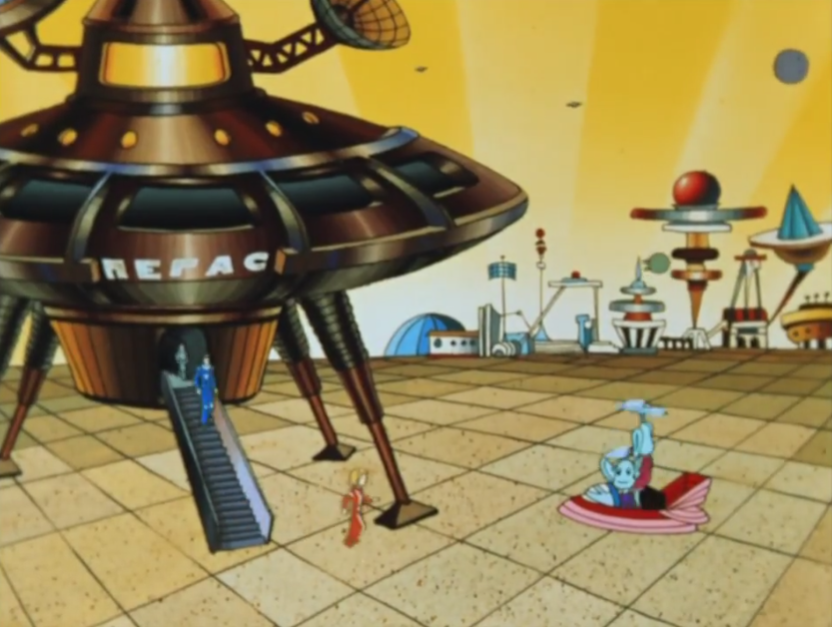
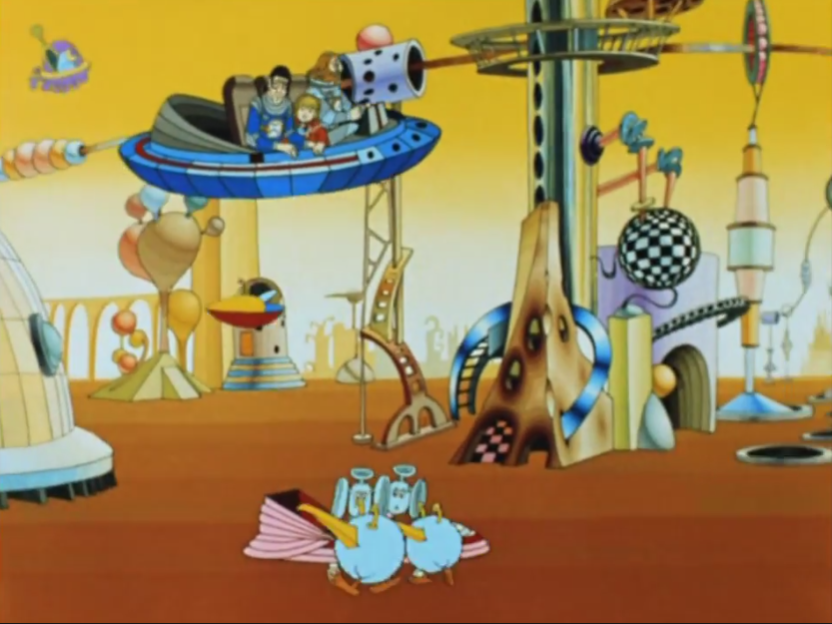
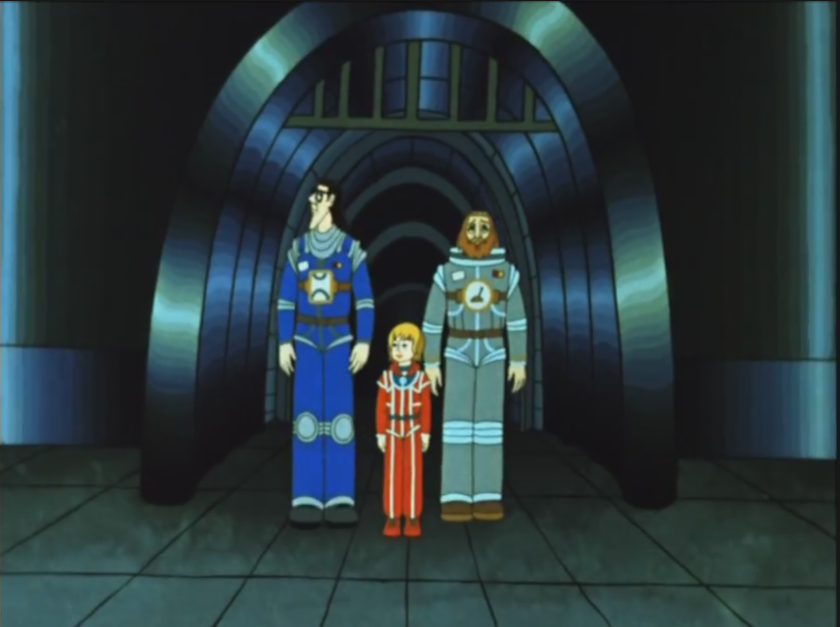
The Mystery of the Third Planet (1981)
Film review #503
Director: Roman Kachanov
SYNOPSIS: Captain Seleznyov and his daughter Alice are travelling in their spaceship to other planets to find animals for their zoo. Seleznyov runs into his old friend Gromozeka, who directs them to the Planet of Two Captains, and a museum dedicated to Captains Kim and Buran, who travelled across the universe in their own spaceship. However, they soon become embroiled in a mystery surrounding the museum’s director, and encounter danger as they try and get to the truth…
THOUGHTS/ANALYSIS: The Mystery of the Third Planet is a 1981 animated film. The film is set in the 22nd century, where we see professor Seleznyov and his daughter Alice looking for rare animals for their zoo in Moscow. On the moon, they run into Seleznyov’s friend Gromozeka, who suggests they head to the “Planet of the two Captains,” where a museum dedicated to Captain’s Kim and Buran, who travelled the universe in their spaceship, is located, and may have information about any rare or exotic animals. The story of the film embroils Alice and her Father in a mystery surrounding the fate of the Captain’s and the museum’s director Verkhovtsev. The film has a fairly short runtime at just under fifty minutes, but it fits a lot into a plot that feels complete and full of development and direction, and a mystery to unravel. It is a film primarily aimed at children, so it has to be interesting enough to keep their attention, and it certainly has plenty going on to do that. The world that it creates in the 22nd century is full of futuristic technology, high contrast colours, and weird aliens that sets up a range of interesting scenarios, but the constant moving around from planet to planet can be a bit confusing. When you’re a kid though, you’re not overly concerned about the intricacies of the plot, but rather the energy and excitement that it provides, and there’s some high stakes and danger that does that, so overall it leaves a positive impression.
The film is based on a series of books centred around the main character Alice Selznyov, which were popular in the Soviet Union with children. Alice provides a relatable character for young viewers, and is full of energy and life to fit that role. One of the highlights of the film is the alien designs: being an animated film, it has the creative scope to go wild with the alien designs, which it certainly does. Gromozeka, with his six arms and disturbing pointy eyes is the one that stands out, and is also in keeping with his appearance as described in the books. The live-action adaptations, such as the miniseries Guest from the Future and the 1987 film Lilac Ball didn’t have the budget to bring these creative designs to life, and opted for more humanoid appearances for the aliens, which is a shame. Even the human characters are distinct enough in appearance and design so that they are instantly recognisable, and despite being all different heights and sizes, they still interact seamlessly.
This film was very popular upon it’s release in 1981, and seems to have remained a favourite memory of people who grew up in that era. So much so that the 2009 film Alice’s Birthday, based on another of Alice’s adventures, has a similar art style and direction that I think tries to ride on the nostalgia of this film. It wasn’t just in the Soviet Union either: it was translated and released in the U.S. (twice) and lots of European countries too. Perhaps the runtime makes it fit neatly into a one hour TV slot (including adverts), so that might be a reason. The English dub is very much of the time and is a bit poorly produced, so if you’re going to watch this film, definitely go for the original version with subtitles. Nostalgia certainly plays a part in how fondly this film is remembered, but that’s not it entirely. It definitely does have plenty of good points independent of said nostalgia: it’s packed and energetic plot, it’s creative character designs, and it’s colourful, abstract scenery are fun and will keep the target audience entertained for its runtime. It holds up as a good film in terms of its structure, style, and design, but I’m not sure there’s enough of a spectacle compared to more modern films for younger generations to have that same feeling.
-
#502 – Alice’s Birthday (2009)


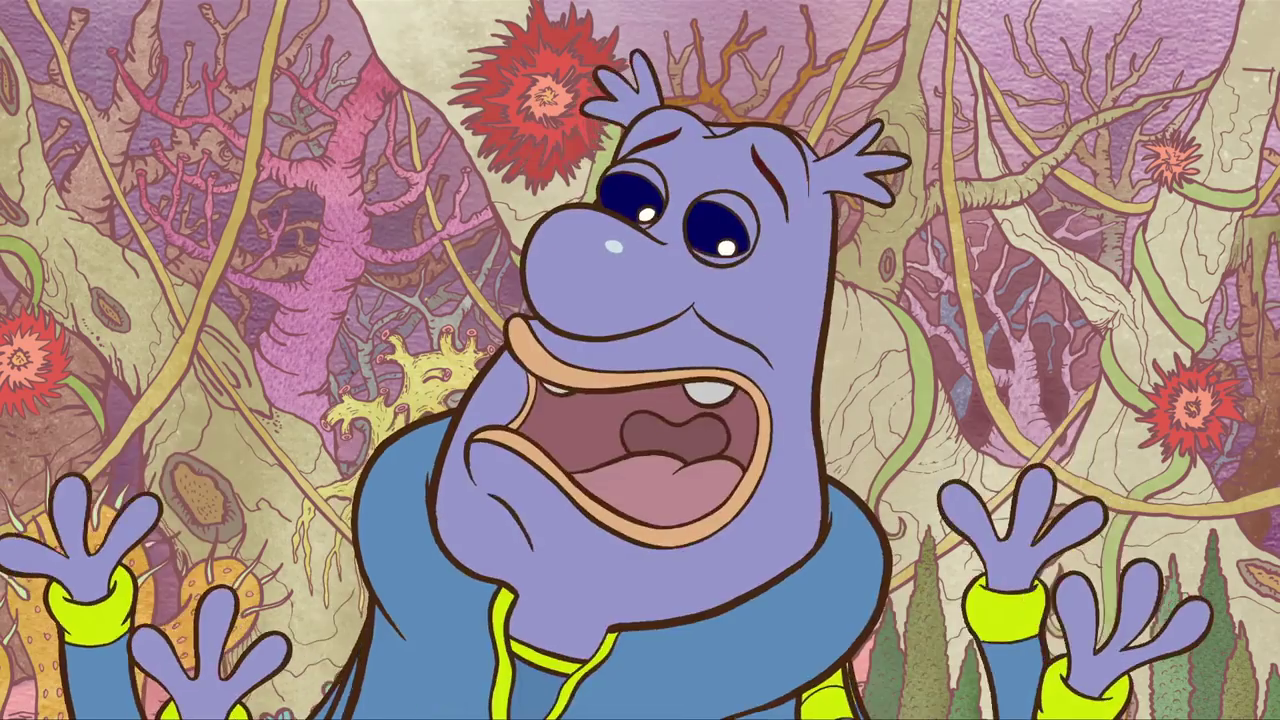

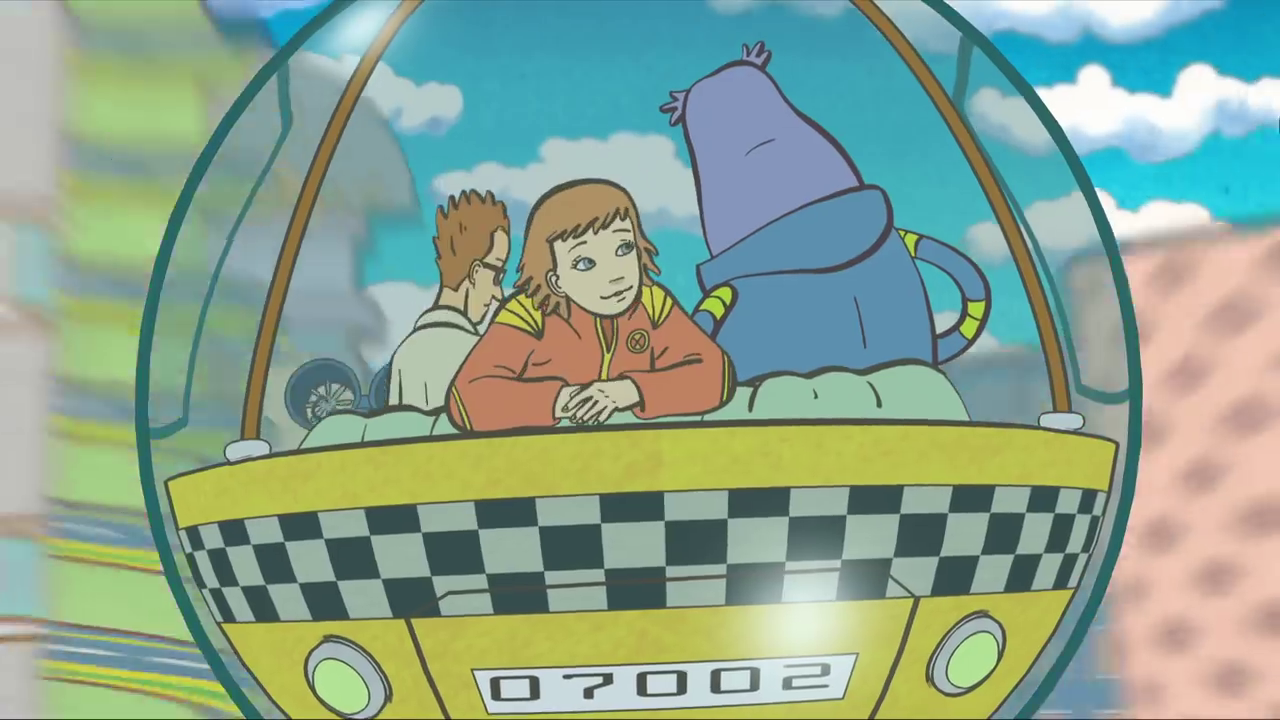
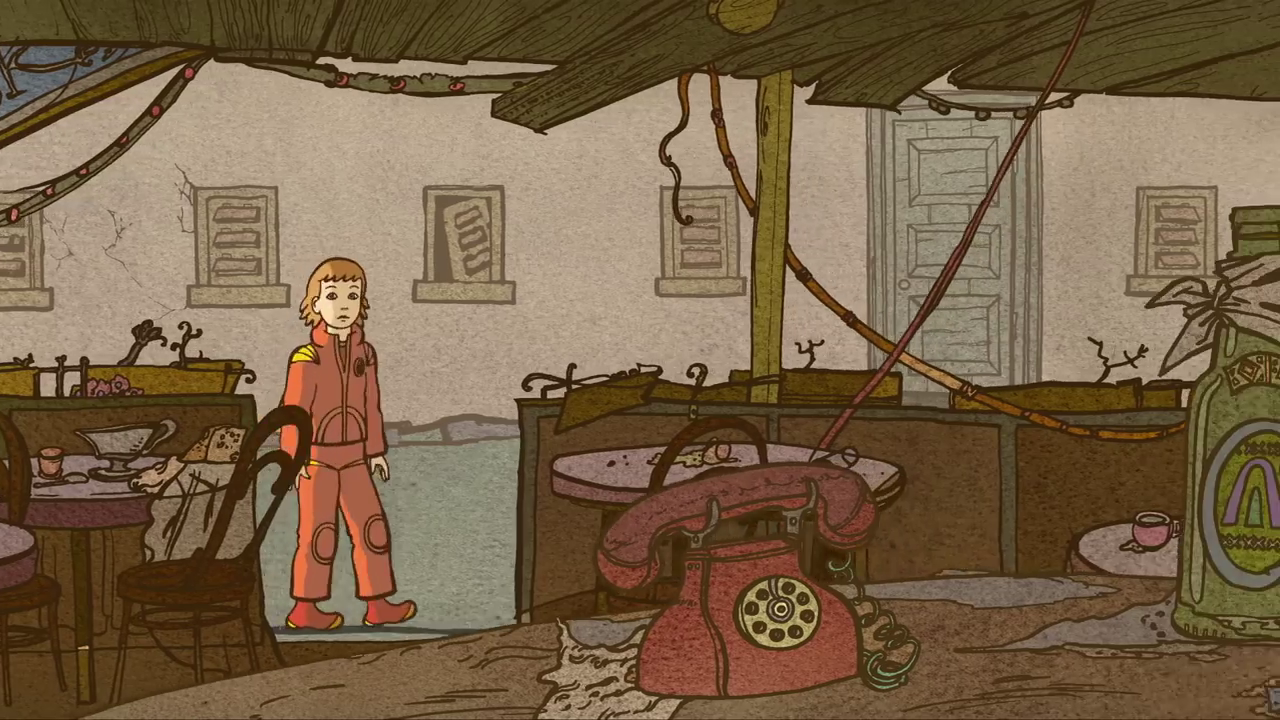
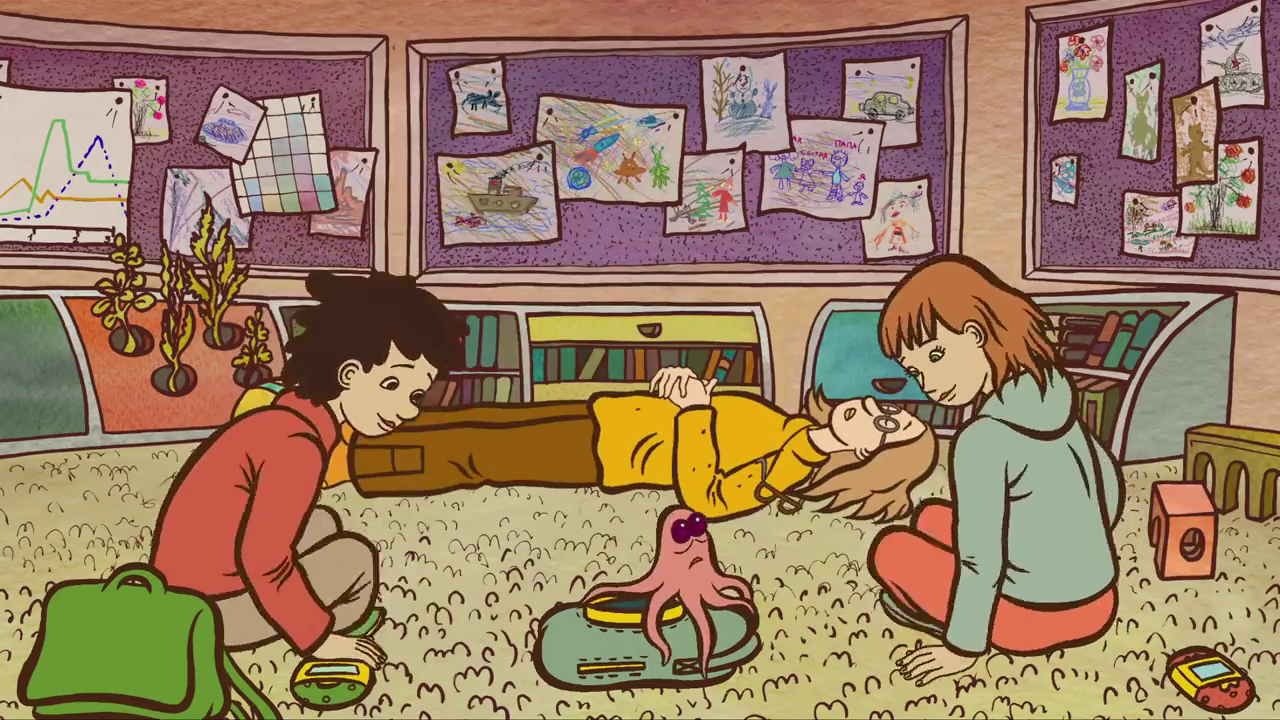
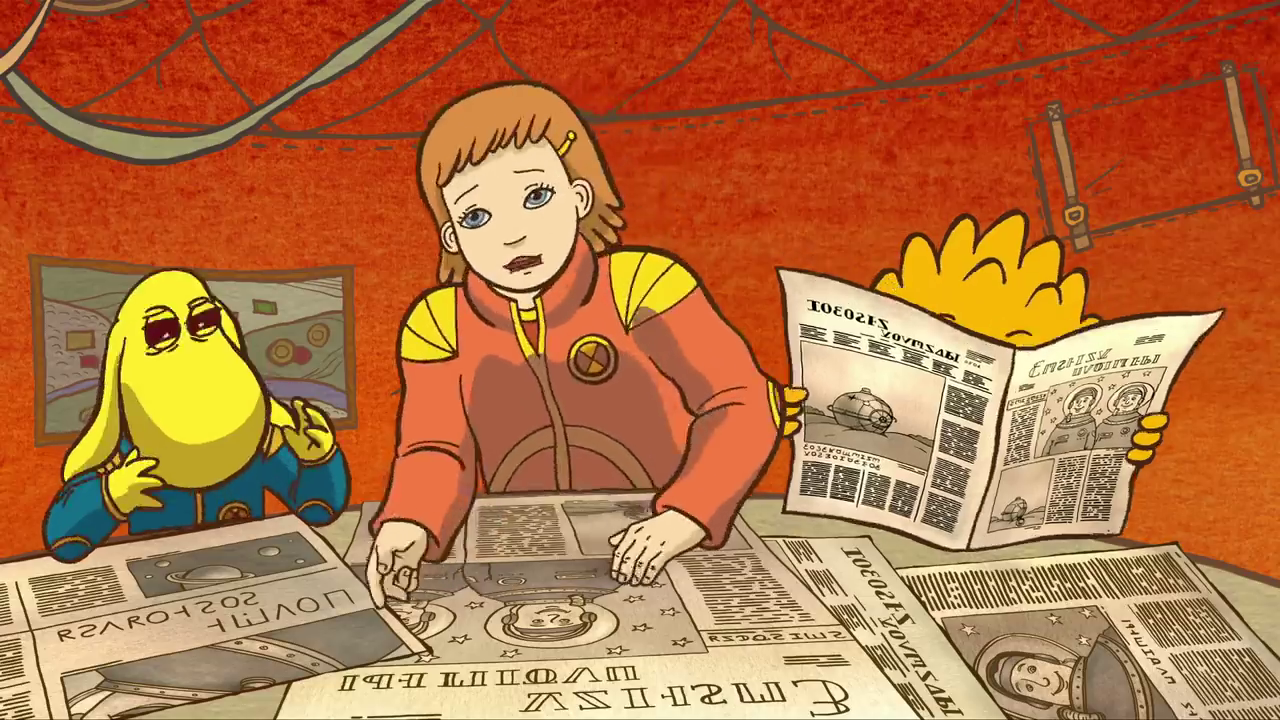
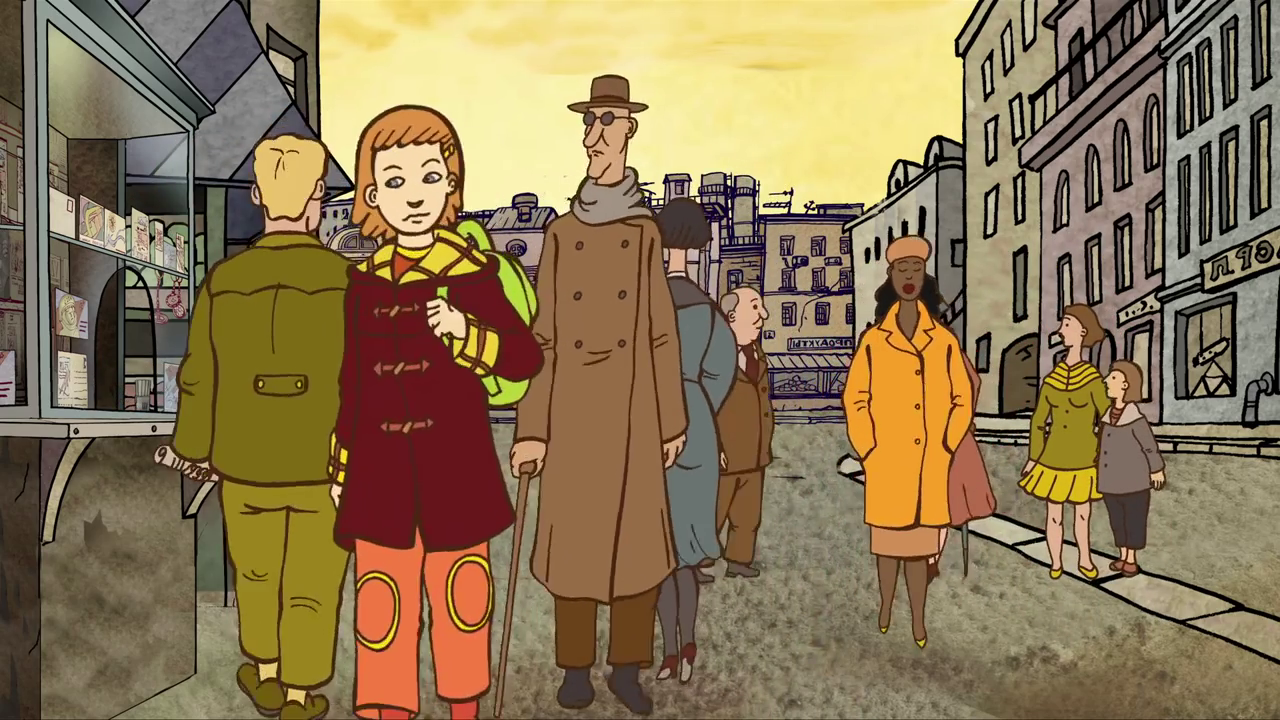
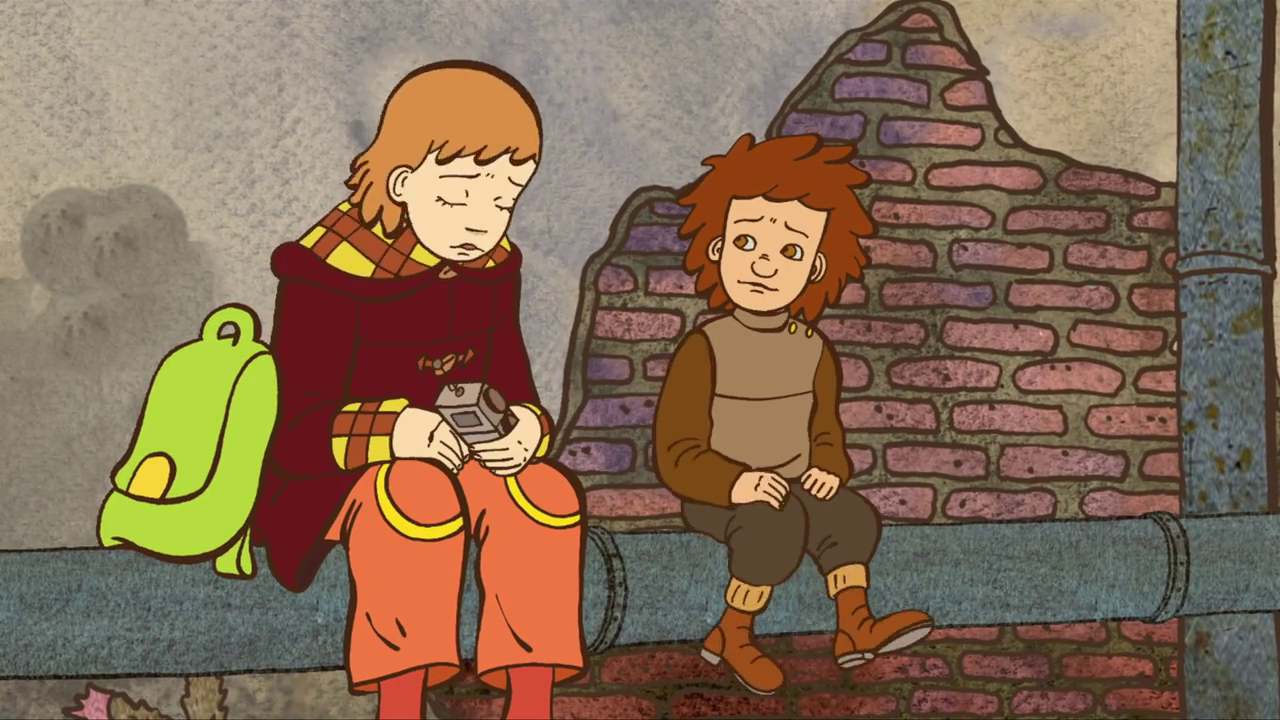
Alice’s Birthday (2009)
Film review #502
Director: Sergey Seryogin
SYNOPSIS: Alice Selezneva has just failed a history exam at school, but things are looking up, as a friend of her Father’s Gromozeka, has arranged a trip for her birthday to the planet of Koleida with a research expedition. The planet once had a flourishing civilisation, but a space virus wiped it out centuries ago. Alice decides to use the expedition’s time travel machine to go back in time (along with Professor Rrr, another member of the expedition) to save the planet’s population, not knowing the virus is still alive in the present and approaching the camp of the expedition…
THOUGHTS/ANALYSIS: Alice’s Birthday is a 2009 animated sci-fi film, which is a re-imagining of the popular 1987 film Lilac Ball and the original novel. The film starts out introducing Alice, an energetic and mischievous girl who fails a history exam after causing chaos in the classroom. She meets up with her Father’s friend Gromozeka, who has a surprise for her upcoming birthday: to join a research expedition to the planet Koleida, where a flourishing civilisation was wiped out by a space virus centuries ago. The film, as mentioned is a re-imagining of the film Lilac Ball and it’s original novel, part of a series of adventures starring the character of Alice. The series was quite popular in the Soviet Union, and so this film is riding a little on that nostalgia bandwagon. However, it certainly stands as a film in it’s own right too, as the story deviates from the original film a fair amount, and being an animated film, has a lot more freedom to bring the futuristic world to life. The story itself flows pretty well, being split into a fairly typical three-act structure that has a good amount of variety, humour, action, and even some scary dark moments. The essentials of the story are things that you have probably seen before involving time travel and trying to change to change the course of the future in time, but it is still entertaining enough to watch.
Alice is a very typical lead for these types of films: adventurous, mischievous, and a typical kid which it’s young audience can identify with. Her character has a wide range of emotions and relationships with other characters, so she feels like a well-rounded individual with enough spirit and energy to be her own person. One notable difference in the rest of the characters form Lilac Ball is that the animated medium gives a lot more freedom to give the aliens a more alien design; in Lilac Ball, the characters which were aliens in the novels were re-imagined as mostly human; in the animated Alice’s Birthday, the aliens aboard the research expedition are all shapes and sizes, and though we don’t hear from many of them, their unique appearances make the film colourful and interesting. There is some weird comments near the beginning of the film, which seem to suggest there’s some discrimination against aliens on Earth, but it’s not really brought up again or addressed, so that’s a bit odd. The minor characters, like Professor Rrr and Gromozeka have a very specific role, and you know what to expect when they’re on screen, which is comforting. On a more novel note, the commander of the expedition is voiced by Natalya Murashkevich, who played Alice in Lilac Ball and the 1984 mini series Guest from the Future, which is a nice nod to those productions, and reinforcing the idea that there is a bit of reliance on nostalgia for this film, even though the target audience is obviously a generation that will not have seen those originals.
The animation is fairly fluid, and the characters and world are colourful and animated enough so that it feels like things never really stand still. This is good in the action scenes, but it becomes a bit more choppy when the characters are moving more slowly. I’m not sure how this compares to other contemporary Russian animation, but it feels like a mix between modern productions, while also having a bit of that Soviet-era aesthetic within it too. Again, maybe that’s part of the nostalgia effect the film is riding on. There’s some musical numbers which are a bit generic, but again, perfectly serviceable for a children’s film. Overall, Alice’s Birthday creates a colourful and energetic world for it’s titular character to be her adventurous self: the designs of the aliens and the futuristic setting are fun, varied and interesting. The story is a little formulaic being a very typical time travel scenario, but it is still made entertaining by having interesting, individual characters, and expressing a variety of emotions throughout the different scenes. A decent children’s film, which also banks on some nostalgia for a beloved character for adults too, although they probably won’t find too much appeal in the content of the film.
-
#501 – Lilac Ball (1987)
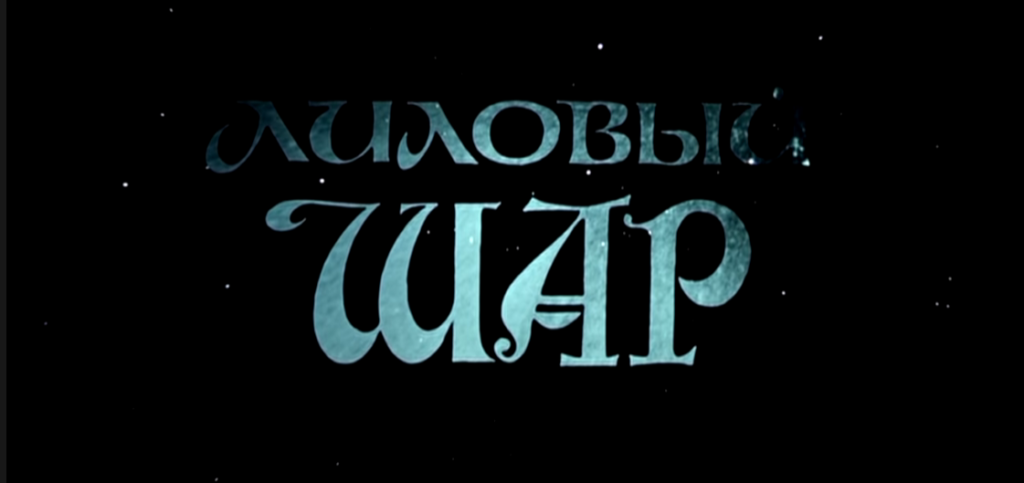
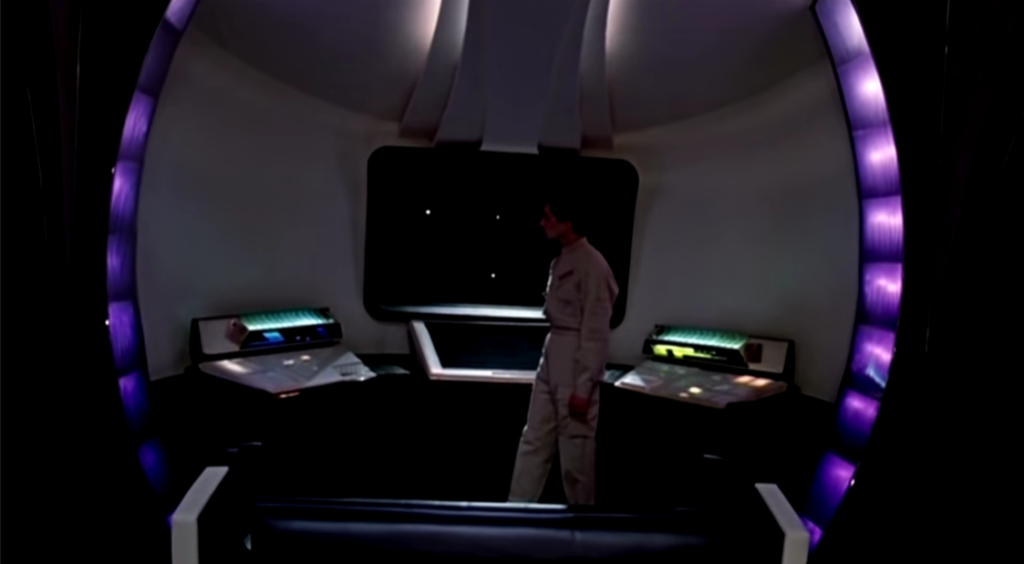
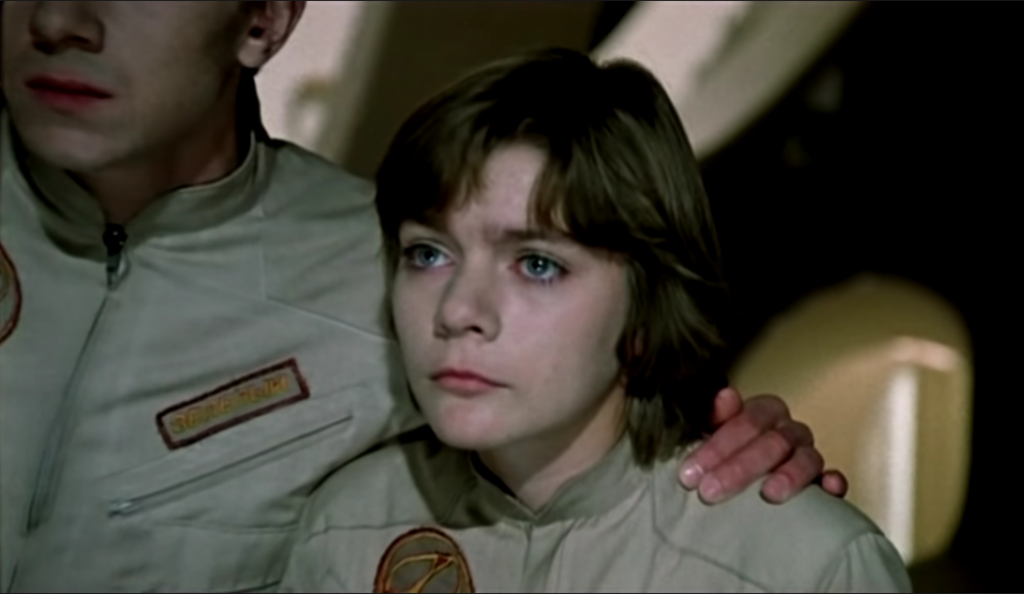
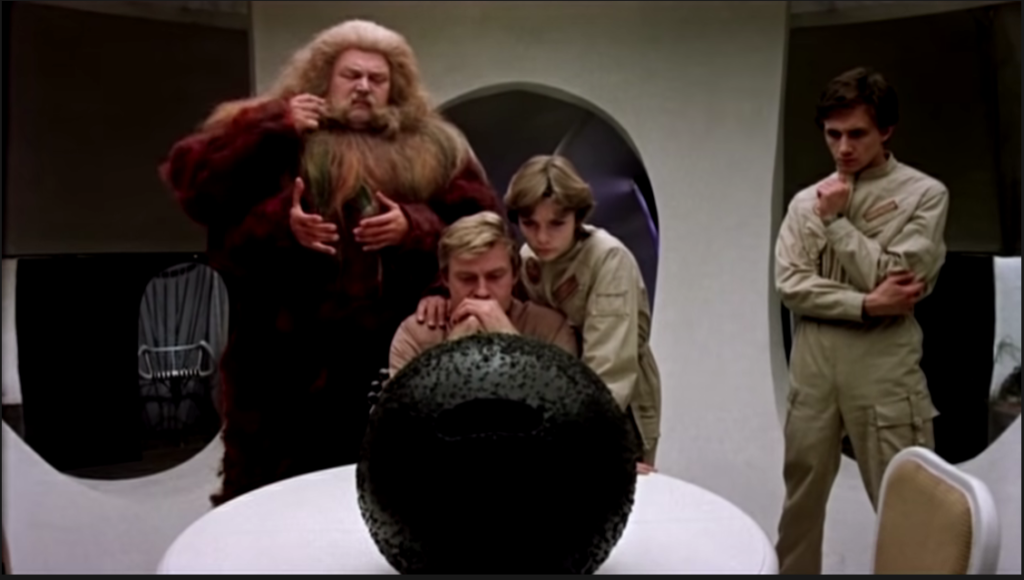
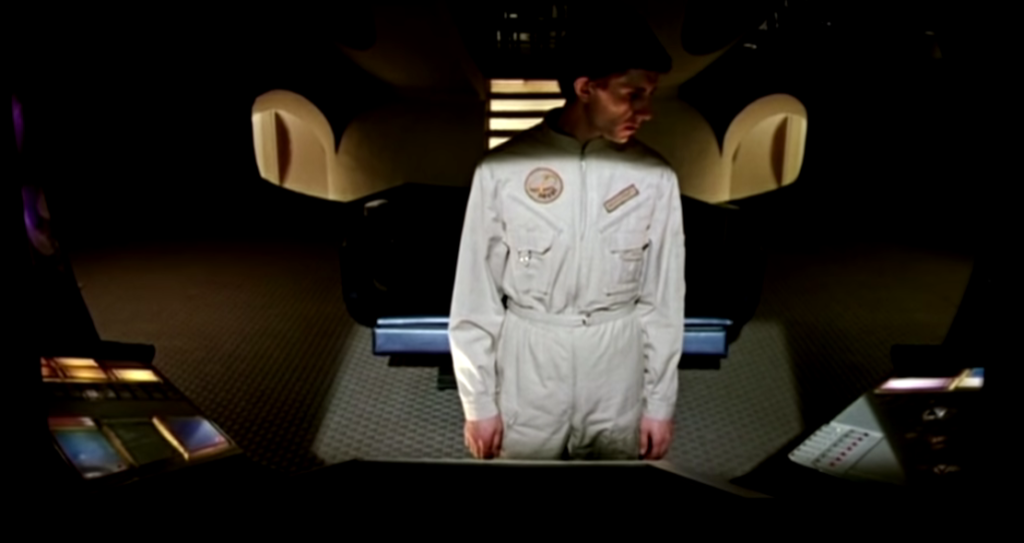
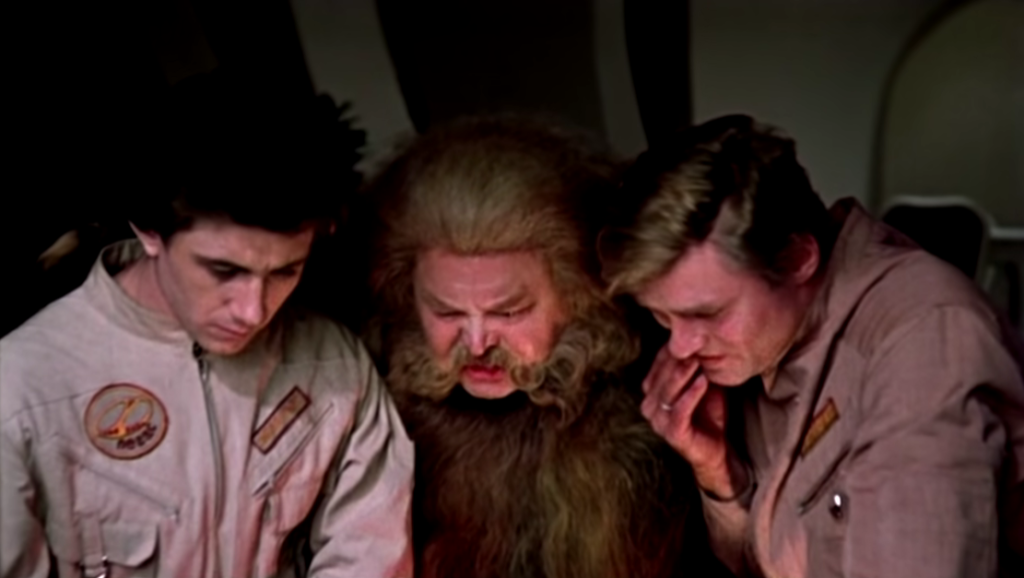
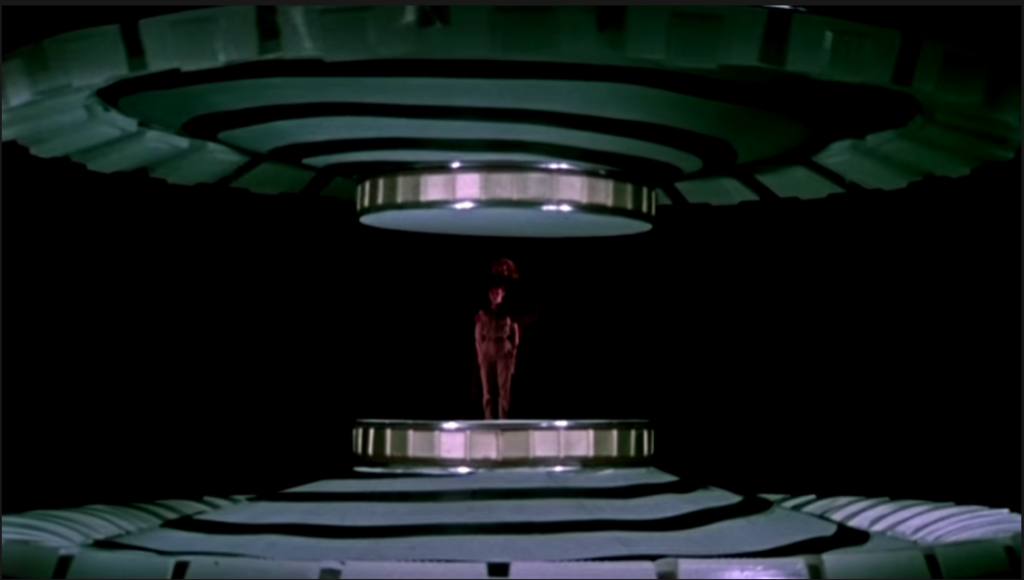

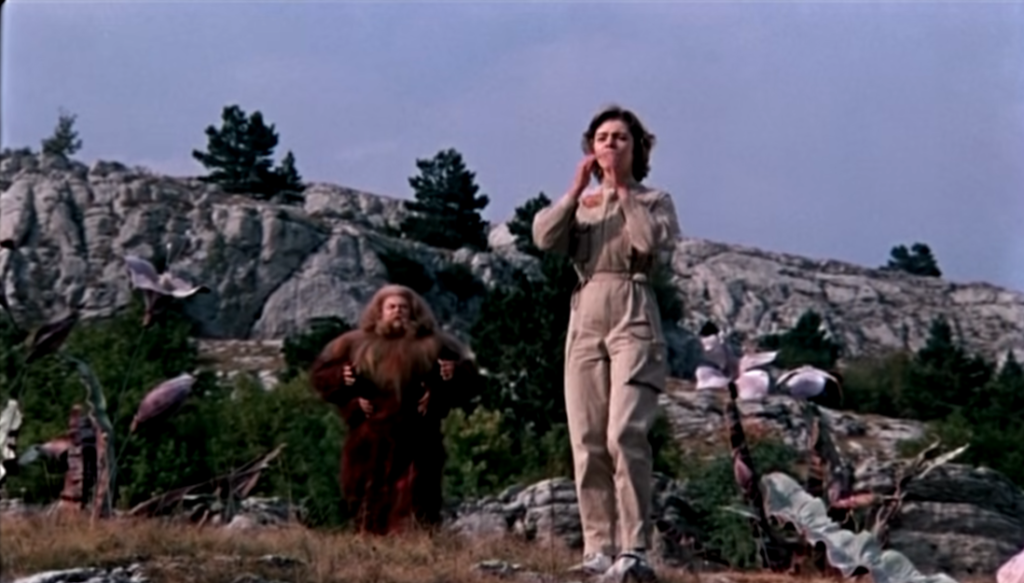
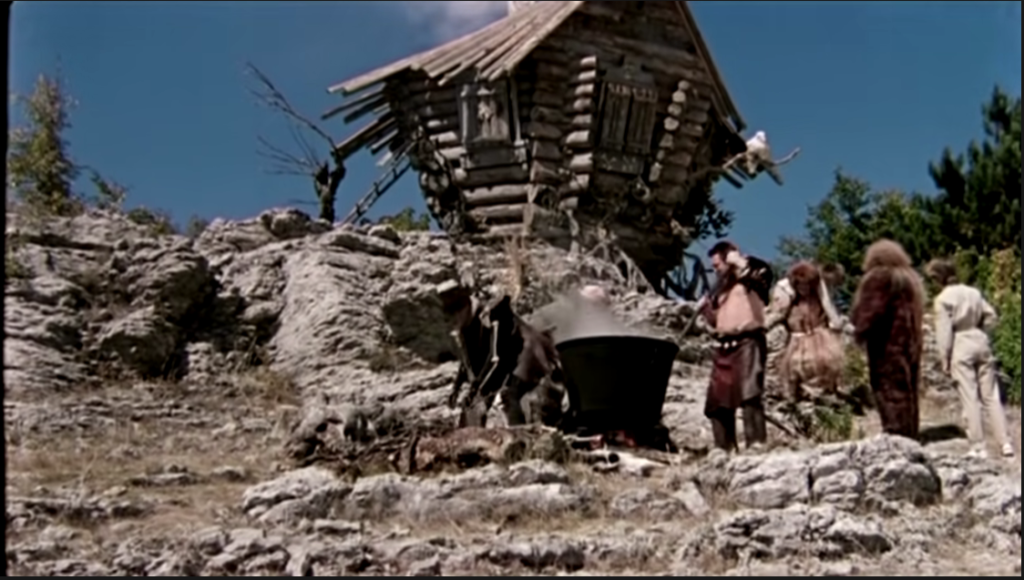
Lilac Ball (1987)
Film review #501
Director: Pavel Arsenov
SYNOPSIS: Travelling aboard their spaceship Pegasus, Professor Selznyova, his daughter Alisa and the rest of the crew encounter Selznyova’s old friend Gromozeka. He explains that he has come from a planet where the population has just been wiped out by a virus that has lain dormant for 26,000 years. The problem is that the same virus was also left on earth, and will activate and wipe out the population in a matter of days unless a cure can be found…
THOUGHTS/ANALYSIS: Lilac Ball is a 1987 children’s sci-fi film based on the novel by Kir Bulychyov. The story starts out aboard the spaceship Pegasus, manned by Professor Selznyova and his crew, including his daughter Alisa. On their travels, they come across the Professor’s friend Gromozeka, who tells them that a 26,000 year old dormant virus has just awakened and wiped out the entire population of a planet…and the same virus is on Earth and will activate in a few days time unless a cure can be found. The only solution is to send Alisa back in time to Earth 26,000 years ago to find the source of the virus. The most notable thing about the film is that it is pretty much an even split between science-fiction and fantasy: almost exactly at the halfway point, the spaceship and future gives way to an ancient Earth filled with fantasy creatures. With a runtime of seventy three minutes, the film certainly packs in a lot of stuff, combining that familiar soviet-era sci-fi aesthetic with some more offbeat fantasy creations. As a film aimed at children, it has to keep up a certain energy level to keep it entertaining, and I think it has plenty of imagination and variety to keep things interesting. The plot is quite packed as mentioned, and is a bit overwhelming to follow. Part of that might be the loose subtitles I watched the film with, and part of it is probably due to the fact that a lot of the original novel was cut to fit it into this fairly short runtime. Intricacies within the plot aren’t too problematic with children’s films though, as long as there’s plenty of jumping off points to spark their imaginations, which I think this film has.
Alisa is the main character of the film, and had appeared in the TV series Guest from the Future in 1984 before this film was made (and portrayed by the same actress). I believe that there is also a series of novels centred around her character, so she’s fairly well established, and it is refreshing to see a good female lead in these types of films. The rest of the characters serve a supporting role, and are a colourful bunch, again split between the more grounded characters in the sci-fi setting, and the fantasy half, where the characters are a bit more outlandish. The earth of 26,000 years ago is probably not very accurate, as there are talking birds, flying monsters, people in wooden houses and other such things which I do not think are historically accurate.
As mentioned, the sci-fi aesthetic feels very familiar if you have watched any other soviet-era sci-fi. The spaceship’s corridors and control panels have that typical look and feel of the time, but have a lot of detail and attention in them that is visually appealing. The spaceship itself is quite a unique design: it is a disc shape with retractable “sails” that resemble paper fans. The scenes with the spaceship flying around evading capture from this giant net…ship…thing is quite well done. I noticed the camera is a bit wobbly as it moved through the sets, which is a bit distracting. Moving into the more fantasy setting, the designs of the creatures reminds me very much of something out of The Neverending Story or Labyrinth, which makes me wonder if they inspired some of the decisions at any point. Lilac Ball has a bit of a dark edge like the aforementioned films, with a trio of comic relief characters being cannibals, and this rather disturbing death scene of this giant bird thing that we follow for about five minutes before it is killed on screen and we are left looking at it’s dying breath. Very odd. Some of the creatures aren’t quite as imaginative as in the novels, probably due to technical and budgetary constraints. Gromozeka is a humanoid-looking alien with four arms for example, but in the original novels, he was much more alien looking, with seven eyes and such. A 2009 partial-remake of this film that, due to it being animated, was able to be much more creative with it’s designs (it even had Alisa’s actress from this film returning to voice Alisa’s mother, which is nice).
Overall, Lilac Ball is an odd combination of science-fiction and fantasy that isn’t really a combination: the film is evenly split between the two. trying to fit these two genres, and a full novel’s worth of plot into such a short runtime creates a story that can be difficult to follow. The film constantly feels like it’s being constrained by one thing or another, but there’s plenty of things going on to keep it entertaining for children, it’s just a shame there’s not enough time or space given to appreciate them.


